There’s something undeniably powerful about having long, flowing locks. They’re versatile, timeless, and let’s be honest—they make for epic hair flips. Whether you’ve been nurturing your natural growth for years or considering extensions to achieve that dreamy length, you’ve come to the right place.
Long hair offers endless styling possibilities, from casual everyday looks to sophisticated updos for special occasions. But with great length comes great responsibility (and occasionally, great frustration). The good news? With the right cut, products, and styling techniques, your long hair can become your signature feature instead of your daily struggle.
As someone who’s spent years experimenting with long hairstyles (and recovering from more than a few styling disasters), I’m here to share 50 stunning long hairstyles that’ll breathe new life into your tresses. These styles work across different hair textures, face shapes, and lifestyles because your hair should work for you, not against you.
1. Classic Layers with Face-Framing Pieces
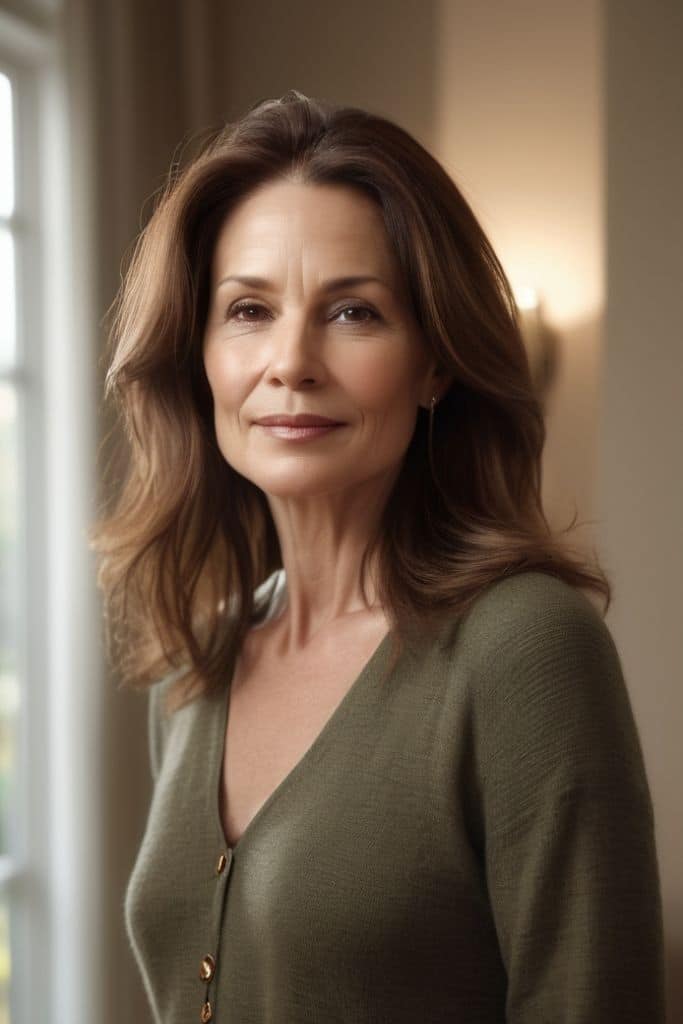
Nothing refreshes long hair quite like well-placed layers. They add movement, reduce bulk, and make styling a breeze. Face-framing layers starting at the chin or collarbone create a soft, flattering effect around your features.
This style works particularly well for straight or slightly wavy hair types. Ask your stylist for long layers throughout with shorter pieces around your face. The beauty of this cut is how it maintains length while removing weight you’ll literally feel lighter when you walk out of the salon.
For styling, a round brush and blow dryer are your best friends. If you’re feeling lazy, air-dry with a texturizing spray for an effortless, lived-in finish. This cut requires minimal maintanence between salon visits (every 3-4 months is usually fine).
2. Curtain Bangs with Long Layers

Curtain bangs have exploded in popularity, and for good reason. They frame the face beautifully without the commitment of full-on fringe. When paired with long layers, they create a gorgeous 70s-inspired silhouette that’s both modern and nostalgic.
These bangs part in the middle (hence the “curtain” name) and blend seamlessly into the rest of your hair. They’re ideal for oval, heart, and square face shapes, but can be customized to flatter any face shape. The longer length of these bangs means less frequent trim appointments winning!
Style with a round brush by rolling the bangs away from your face, or use a large-barrel curling iron for a more polished finish. On lazy days, simply twist them back with a little texturizing spray and let em’ do their thing naturally.
3. Long Blunt Cut with Center Part
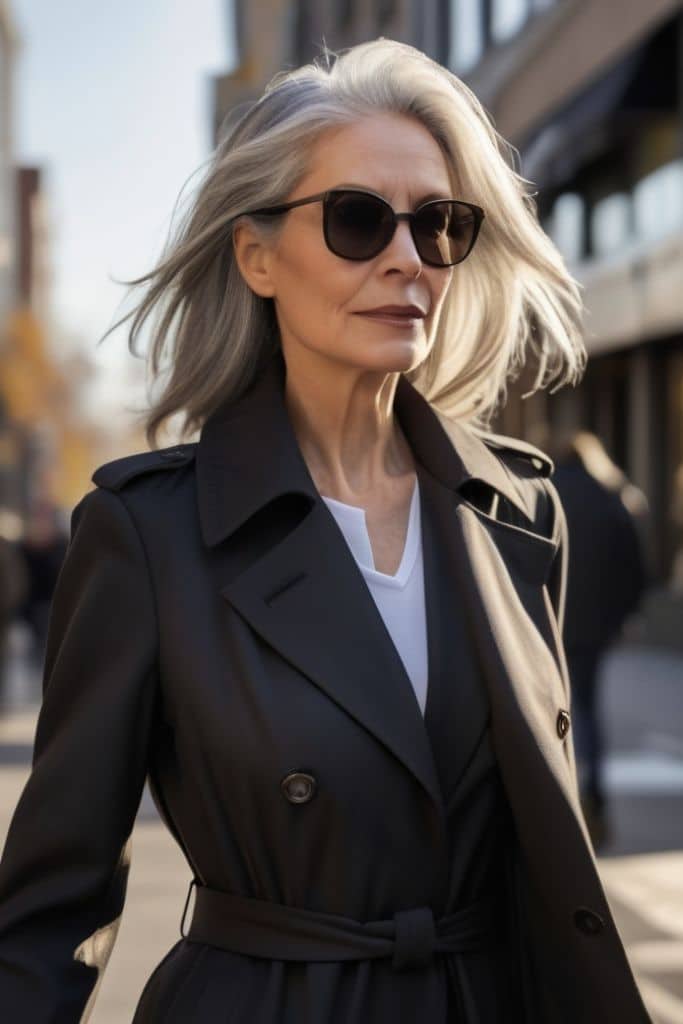
Sometimes simplicity makes the strongest statement. A long, one-length cut with minimal layering creates a sleek, sophisticated look that’s both timeless and trendy. The precision of this cut emphasizes healthy ends and showcases your hair’s natural texture.
This style works best for those with straight or slightly wavy hair, as it highlights the hair’s condition. The center part modernizes the look and creates beautiful symmetry. If you have fine hair, this cut gives the illusion of thickness and fullness.
Maintain this style with regular trims every 8-10 weeks to keep those ends pristine. For daily styling, straightening irons or blow-drying with a paddle brush will enhance the sleek effect. A shine serum or spray is essential for that glass-like finish we’re all obsessed with lately.
4. Beachy Waves with Invisible Layers
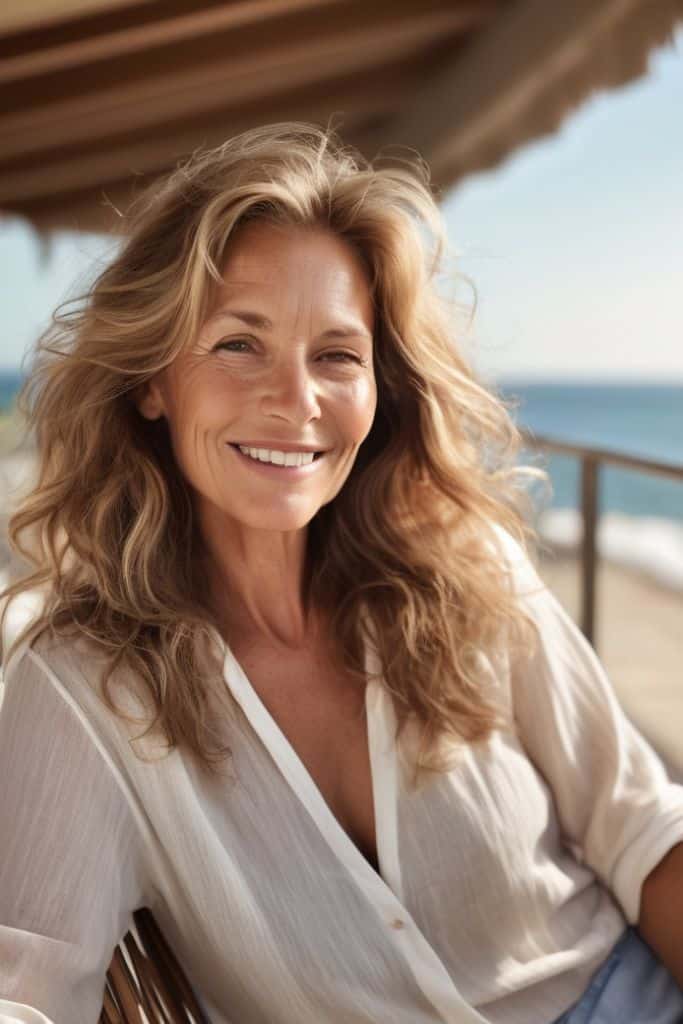
Nothing says effortless quite like perfectly imperfect beachy waves. This style incorporates subtle, almost invisible layers that create natural movement while maintaining an overall long length. It’s the ultimate “I woke up like this” vibe (even though we know better).
For this cut, ask your stylist for long, subtle layers that blend seamlessly. The layers should be strategically placed to enhance your natural wave pattern without creating obvious steps in the hair. This style is particularly flattering on round and heart-shaped faces.
Styling can be as simple as scrunching in some sea salt spray and air-drying, or using a 1-inch curling wand on alternating sections, leaving the ends straight for that lived-in look. Remember not to brush through after curling—just use your fingers to separate and zhuzh.
5. Long Shag with Textured Ends

The modern shag has evolved from its 70s roots into something softer and more wearable for long hair. Think layers upon layers, with shorter pieces around the crown that gradually blend into longer lengths. The result is voluminous, rock-and-roll texture that still swings past your shoulders.
This style works amazingly well for those with natural waves or curls, as it enhances natural texture and removes weight that might otherwise pull down your hair. Square and oval faces particularly benefit from the softening effect of the shorter layers around the face.
Styling is refreshingly low-maintenance some texturizing spray and scrunching is often all you need. For a more polished look, use a diffuser when blow-drying to maintain volume without creating frizz. This cut is perfect for the wash-and-go girl who still wants to look intentionally styled.
6. Mermaid Waves with Extra-Long Length
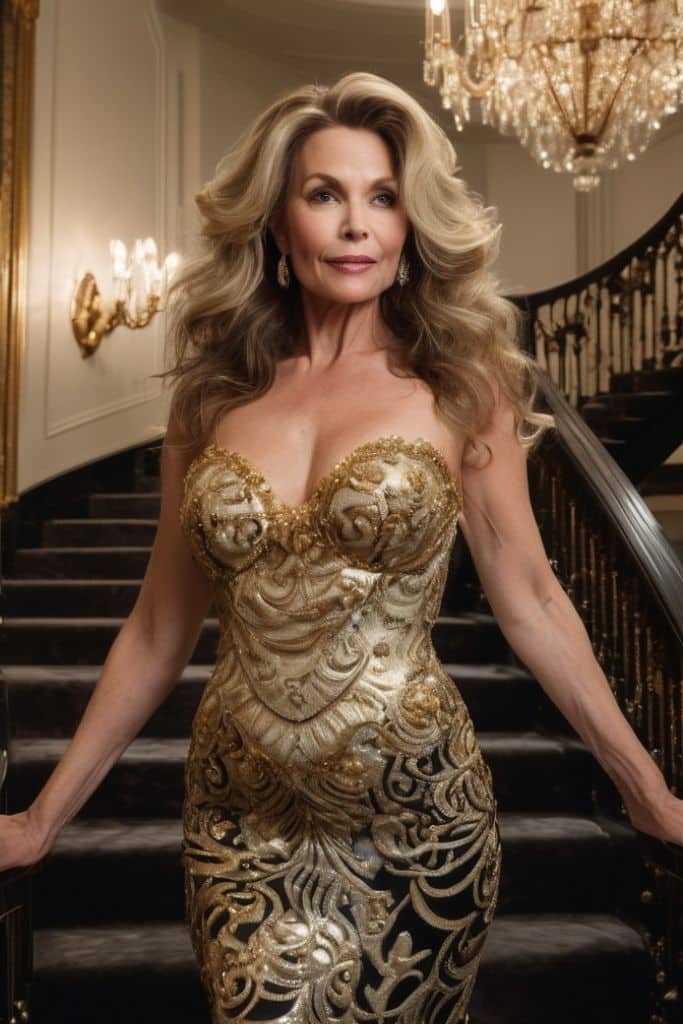
When you’ve invested years in growing your hair, sometimes you want to show off that extraordinary length. Mermaid waves—characterized by their loose, S-shaped pattern are perfect for ultra-long hair, creating movement without sacrificing any precious inches.
This style works best for those who already have hair past the middle of their back. The weight of very long hair helps the waves maintain their shape without excessive product. Ask for minimal layers just enough to prevent the ends from looking stringy or heavy.
To achieve those coveted mermaid waves, a 3-barrel waver is your secret weapon. Alternatively, braid your damp hair before bed and wake up to effortless waves. Always use a heat protectant if styling with hot tools, as damaged ends are especially noticeable in very long hair.
7. Blended Balayage with Long Layers
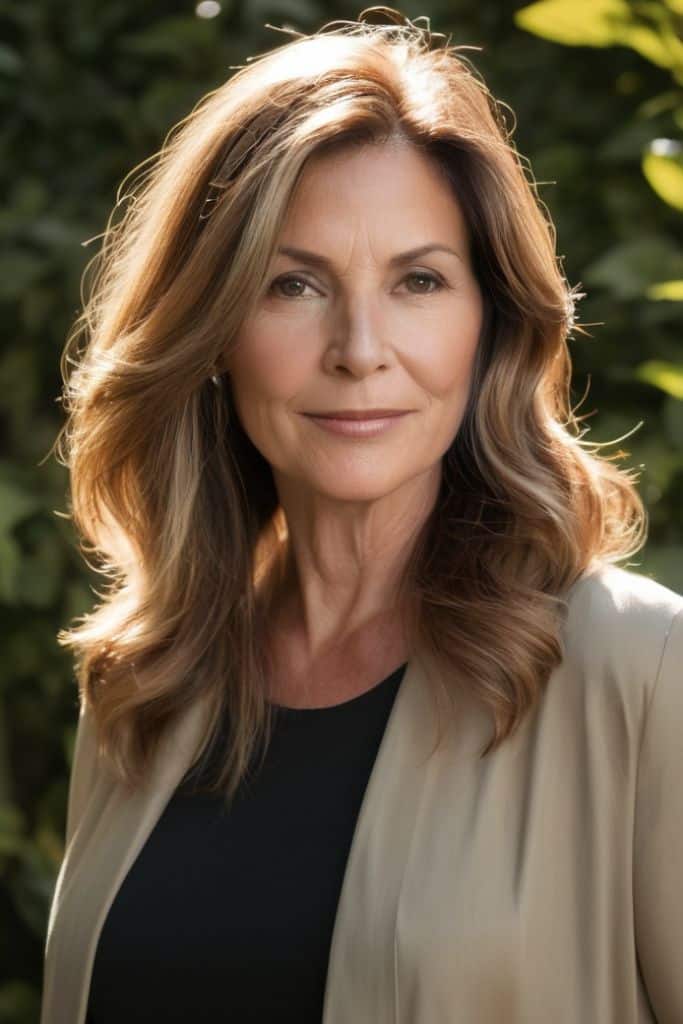
Color and cut should always work together, and nowhere is this more evident than with the balayage-layered combo. Hand-painted highlights create dimension that makes layers pop, while the layers themselves showcase the multi-dimensional color.
Ask your stylist for subtle, face-framing layers that start around the cheekbones and gradually increase in length. The balayage technique should follow these layers, with lighter pieces concentrated around the face and ends. This creates a natural sun-kissed effect that grows out beautifully.
Style with loose waves to really showcase the dimension of both the cut and color. A 1.25-inch curling iron, alternating the direction of each curl, creates that perfectly undone finish. This style is particularly flattering on those with olive or warm skin tones, as the lightened pieces brighten the complexion.
8. Long Curly Layers

Embracing natural curls at long lengths requires the right cutting technique. Long curly layers remove weight while preserving length, allowing curls to spring up and maintain their natural pattern without becoming triangle-shaped.
The key to this cut is dry cutting curls should be cut in their natural state, not when wet and stretched out. Your stylist should cut each layer to enhance your unique curl pattern. This technique works for all curl types, from loose waves to tight coils.
Styling focuses on curl definition and moisture. Use a curl-enhancing cream or gel, scrunch with a microfiber towel, and either air-dry or use a diffuser on low heat. Avoid brushing dry hair, which creates frizz instead, use fingers or a wide-tooth comb only when hair is wet and conditioned.
9. Wispy Bangs with Long Straight Hair
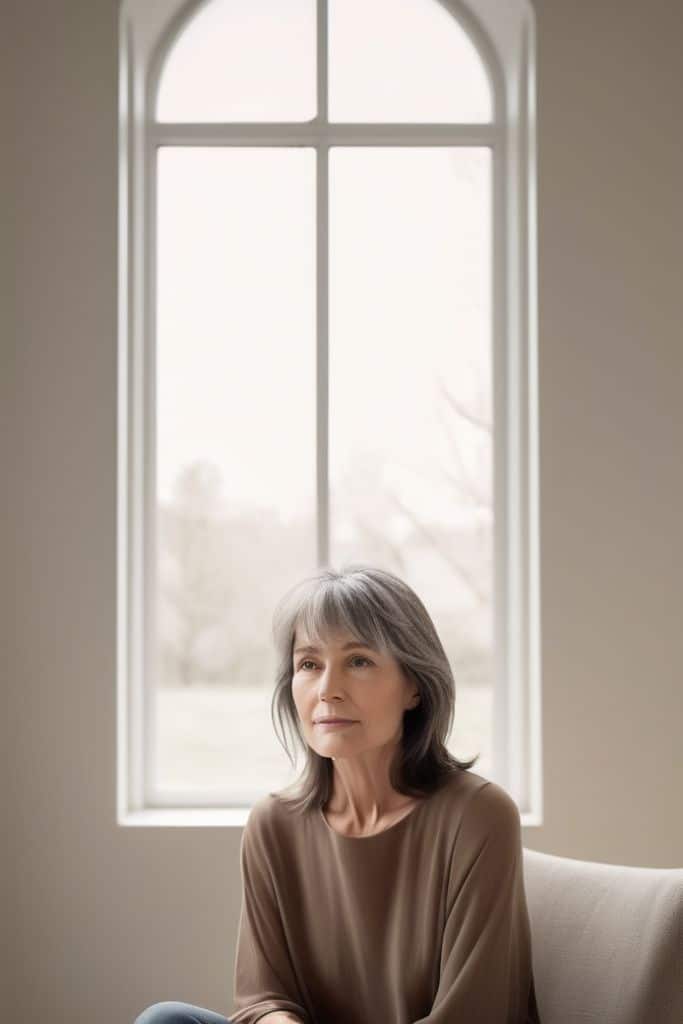
Long, straight hair paired with wispy, see-through bangs creates a romantic, feminine look with a hint of French-girl chic. Unlike heavier fringe styles, these delicate bangs don’t overwhelm the face and require less frequent trimming.
This style works particularly well for those with fine to medium hair texture. The wispy nature of the bangs means they blend seamlessly with the rest of your hair when pushed to the side. They’re also ideal for those testing the waters of bangs without full commitment.
For styling, a small round brush helps direct bangs where you want them. A light-hold hairspray keeps them in place without stiffness. The rest of your hair can be worn sleek and straight for a classic look, or with gentle waves for added texture and dimension.
10. Long Layers with Side-Swept Bangs
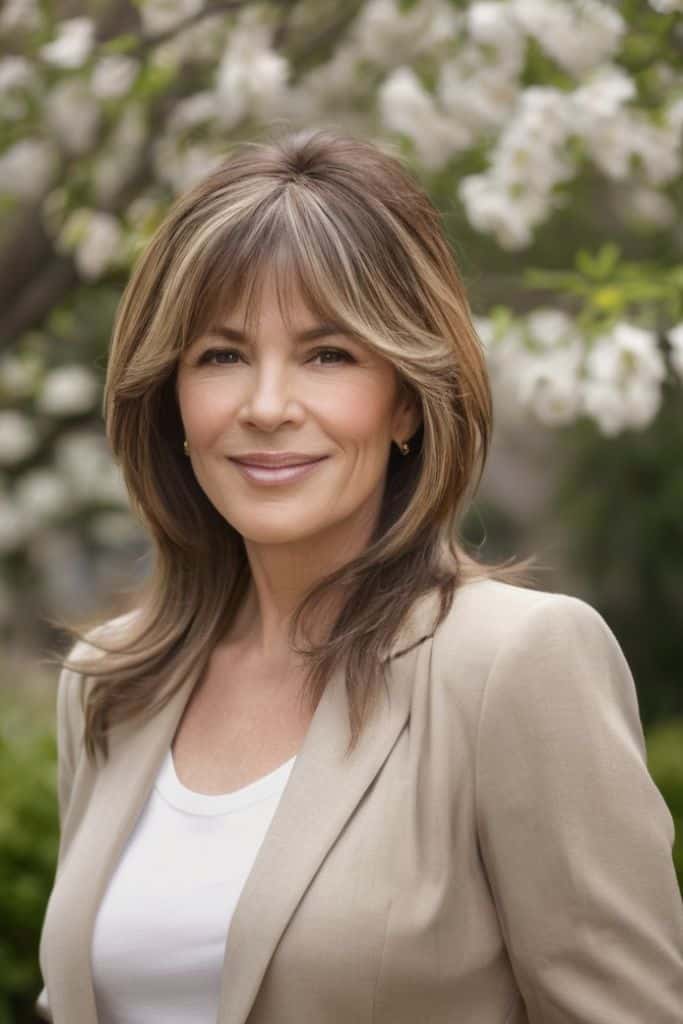
Side-swept bangs offer the perfect compromise between the boldness of full bangs and the subtlety of no bangs at all. When paired with long layers, they create a soft, feminine frame that particularly flatters round and square face shapes.
Ask your stylist for layers that start around your collarbone, gradually increasing in length toward the back. The side-swept bangs should blend into these layers, with the shortest pieces hitting around the cheekbone and the longest reaching the jaw.
Blow-dry the bangs using a round brush, directing them to one side. A light-hold hairspray keeps them in place without stiffness. This versatile style can be worn sleek for a professional look or tousled for more casual occasions.
11. U-Shaped Cut with Long Layers
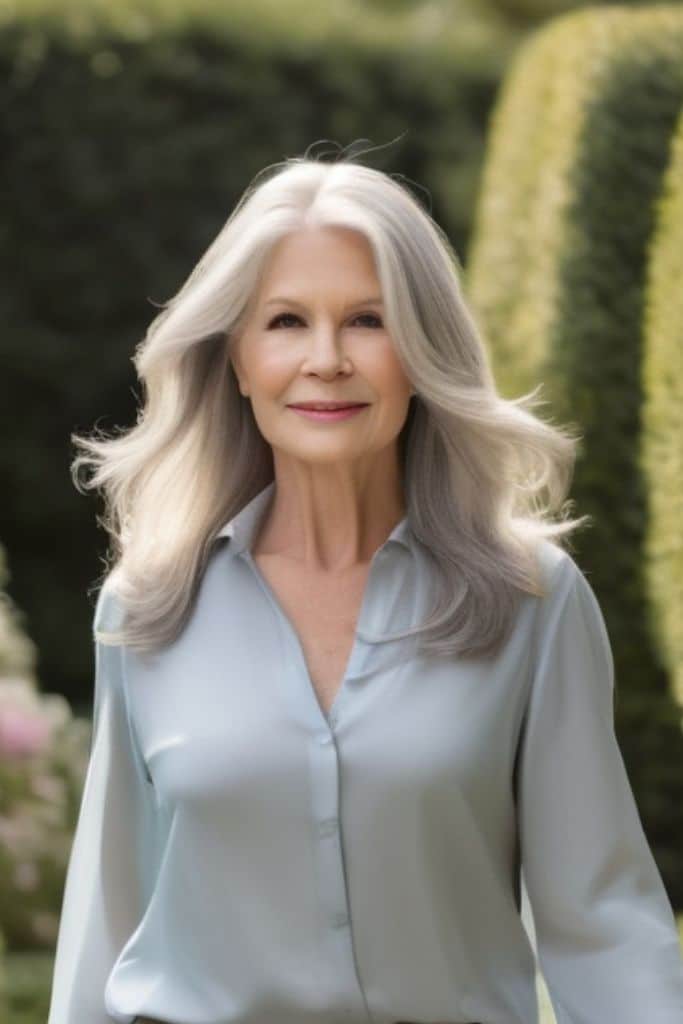
The U-shaped cut creates a soft, rounded perimeter that’s slightly shorter in the back and gradually lengthens toward the front. This shape adds dimension and movement while maintaining an overall long length that can still be pulled into ponytails or updos.
This style works particulary well for thick, straight, or wavy hair types. The U-shape prevents the heavy, curtain-like effect that can happen with one-length cuts on thick hair. The subtle shortening in the back also removes weight where it’s most prone to tangling.
Styling can be as simple as a basic blow-dry with a round brush, or wearing it naturally with some texturizing spray. The U-shape looks particularly stunning when curled, as it creates a beautiful cascading effect with the shorter back pieces framing the longer front sections.
12. Choppy, Textured Ends
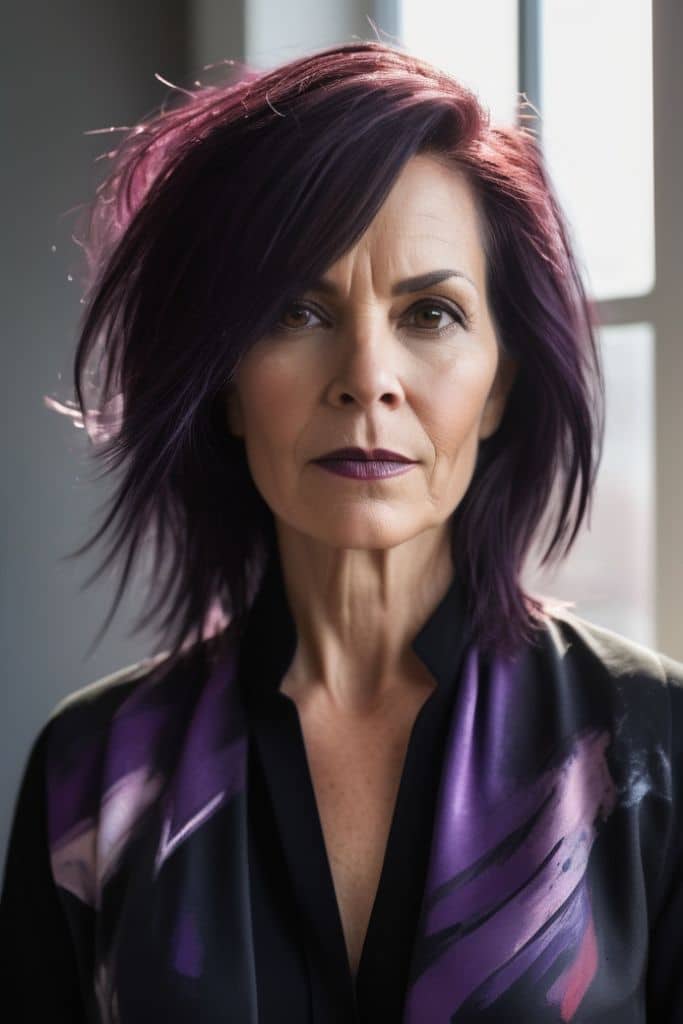
Adding texture through choppy ends creates movement and dimension without sacrificing length. This technique involves point-cutting or razor-cutting the very ends of the hair to create piece-y, lived-in texture rather than a blunt line.
This style works well for all hair types but is particularly effective for fine hair, as it creates the illusion of fullness and texture. The choppy ends can be concentrated just at the perimeter or throughout the layers, depending on how much movement you desire.
For styling, a texturizing spray or paste applied to the ends enhances the piece-y effect. This cut pairs beautifully with beachy waves or even straight styles, adding interest and movement to otherwise basic looks. It’s also incredibly low-maintenance, as slightly grown-out ends simply add to the intentionally undone vibe.
13. Long Pixie-Cut Bangs with Flowing Length

This bold contrast pairs short, pixie-inspired bangs with ultra-long lengths for an edgy, fashion-forward look. The short fringe (think Audrey Hepburn meets modern rock star) creates a striking frame for the eyes while the long hair maintains its feminine flow.
This style works best for those with oval or heart-shaped faces and medium to thick hair texture. The contrast between short and long creates a visually interesting silhouette that’s both daring and wearable for everyday.
Style the short bangs with a small amount of pomade or texturizing paste for definition. The length can be worn sleek for maximum contrast or wavy for a softer effect. This cut requires commitment to regular bang trims, typically every 3-4 weeks, to maintain the precise shape.
14. Asymmetrical Long Cut
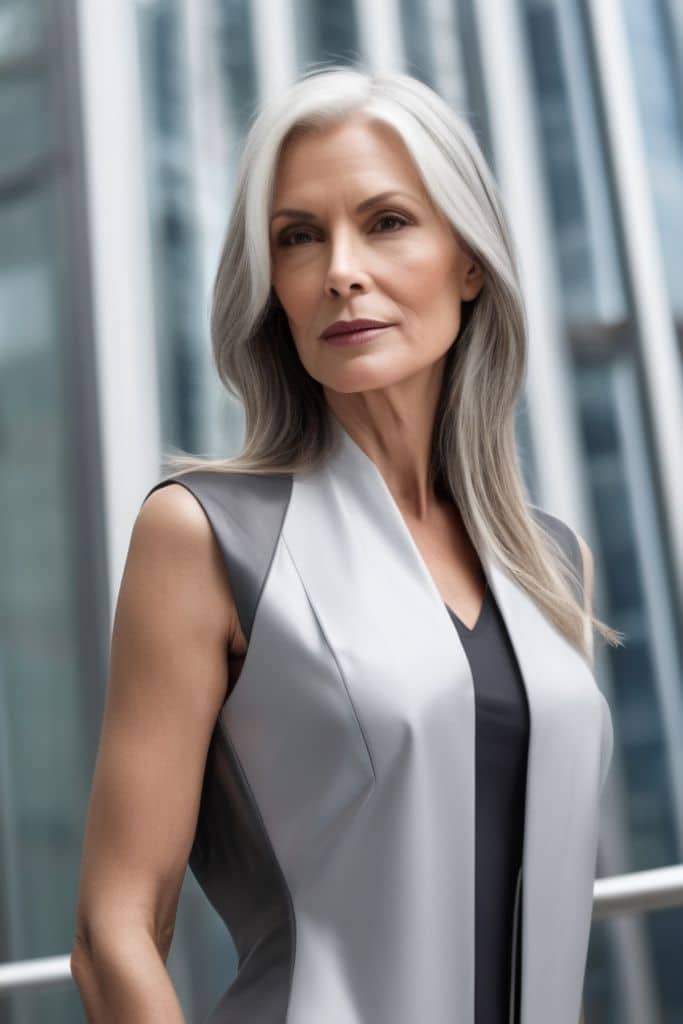
An asymmetrical cut slightly longer on one side than the other adds an unexpected edge to long hair. The difference can be subtle (an inch or two) or more dramatic, depending on your comfort level with asymmetry.
This style works particularly well for those who typically wear their hair parted to one side, as it enhances the natural fall of the hair. The longer side can help frame and slim a round face, while the shorter side adds movement and keeps the style from feeling heavy.
For styling, a side part is essential to showcase the intentional asymmetry. This cut looks striking when worn sleek and straight, as the length difference becomes more apparent. Regular trims are important to maintain the deliberate length difference rather than allowing it to grow out evenly.
15. Long Wolf Cut

The wolf cut a hybrid between a shag and a mullet has become increasingly popular for long hair. It features shorter, choppier layers around the crown and face that blend into longer, more subtle layers toward the ends. The result is voluminous on top with flowing length below.
This edgy style works exceptionally well for those with natural wave or curl patterns, as the layers enhance natural texture. It’s also surprisingly flattering on most face shapes, as the face-framing layers can be customized to highlight your best features.
Style with a diffuser to enhance volume at the roots while maintaining the integrity of your natural texture. A texturizing spray scrunched into the layers creates piece-y definition. This cut grows out beautifully, gradually transitioning into a more traditional layered look.
16. Hime Cut (Japanese Princess Cut)
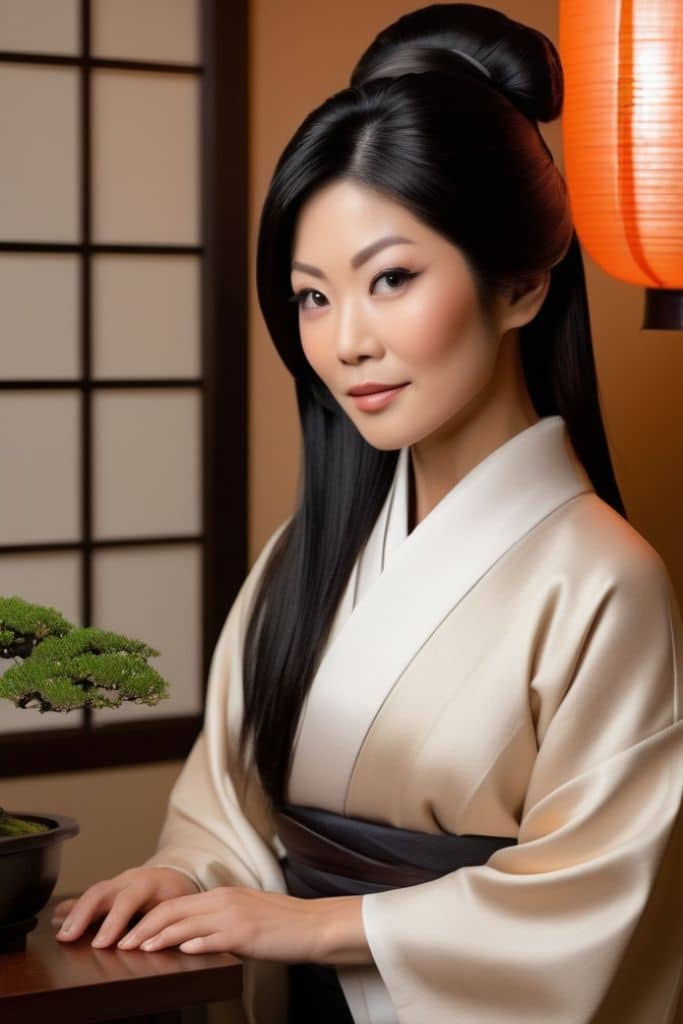
The Hime cut, originating from Japanese hairstyling traditions, features straight-across frontal bangs with distinct, straight side sections that fall longer than the rest of the hair. The main length remains long and often one-length, creating a striking, graphic silhouette.
This architectural style works best for straight, smooth hair types that can showcase the precise lines of the cut. The side sections typically frame the face at cheek or jaw level, while the rest of the hair flows well past the shoulders.
Styling focuses on smoothness and shine to highlight the geometric precision of the cut. A flat iron and shine serum are essential tools for maintaining the sleek, polished look this style demands. Regular trims are necessary to maintain the exact lengths of the different sections.
17. Rounded Layers with Curtain Bangs

Rounded layers create a soft, curved shape throughout the hair, with each layer slightly shorter than the one beneath it. When paired with curtain bangs, they frame the face beautifully while maintaining an overall long silhouette.
This style works particularly well for those with medium to thick hair, as the layering removes bulk without creating too much disconnection. The rounded shape is especially flattering for square face shapes, as it softens angular features.
Style with a large round brush during blow-drying to enhance the curved shape of the layers. The curtain bangs should be styled away from the face using a round brush or curling iron. This cut requires moderate maintenance with trims every 8-10 weeks to preserve the precise layering pattern.
18. Long Hair with Baby Bangs
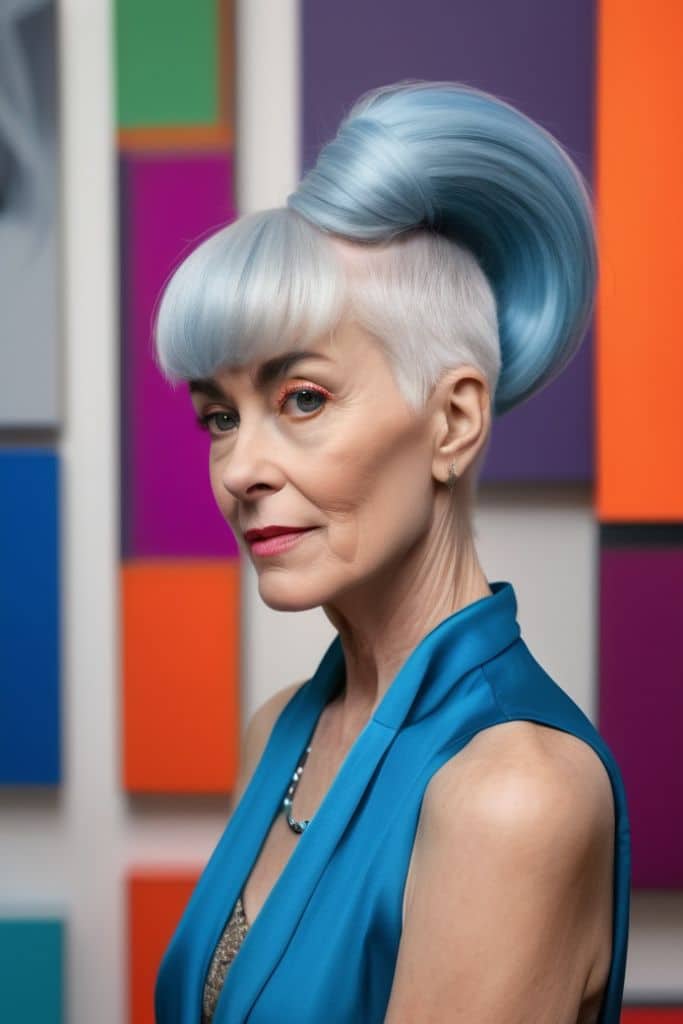
The contrast of super-short bangs (hitting well above the eyebrows) with extra-long hair creates a bold, fashion-forward look that’s not for the faint of heart. This style makes a statement while still allowing for the versatility of long hair.
This dramatic pairing works well for those with strong facial features who aren’t afraid to highlight them. The tiny fringe draws attention to the eyes and brow line, while the long length maintains femininity and softness.
Style the micro-bangs with a small flat iron for precision, using just a touch of lightweight pomade to define without weighing down. The length can be worn in various ways sleek and straight for maximum contrast, or wavy for a more romantic take on this edgy style. Regular bang trims (every 2-3 weeks) are essential to maintain the precise length.
19. Long Hair with Money Piece Highlights

The “money piece” technique involves brightening the front sections of hair that frame the face, creating a face-brightening effect that’s both trendy and flattering. When combined with long, flowing hair, it creates dimension and interest without requiring all-over color.
This style works for all hair types and colors, though the contrast is most striking on darker base colors. The highlighted pieces can be as bold or subtle as you prefer, from dramatic platinum to soft caramel shades just a few levels lighter than your base.
Style by directing the highlighted pieces away from the face with a round brush or curling iron to showcase the color dimension. This technique grows out beautifully, gradually transitioning into a more subtle balayage effect, making it relatively low-maintenance compared to all-over color.
20. Long Feathered Layers
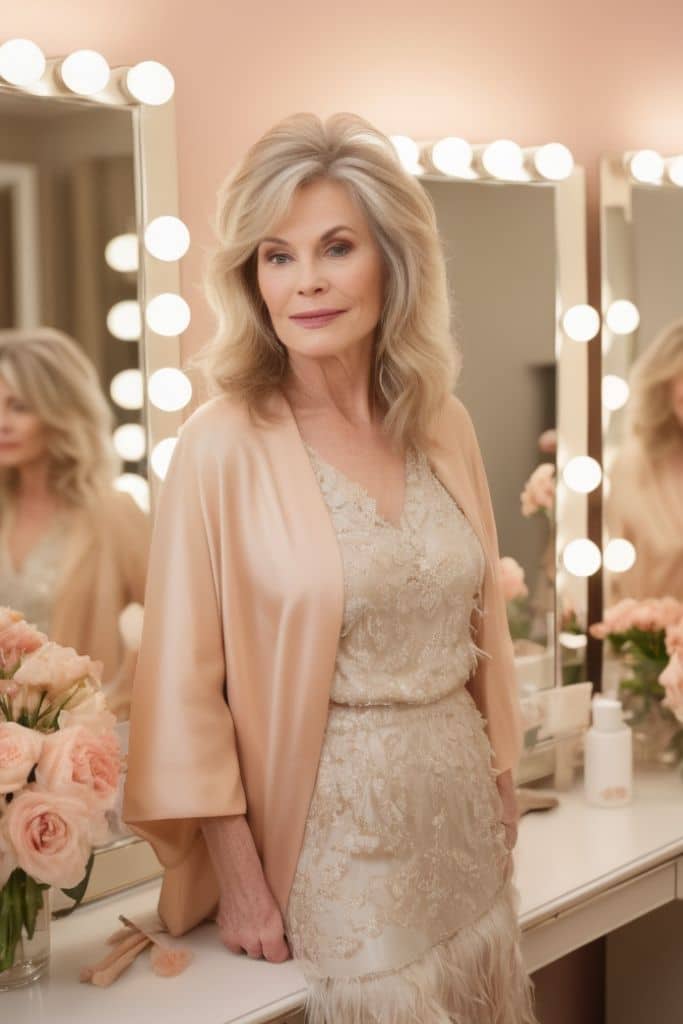
Feathered layers—characterized by their soft, wispy ends that resemble feathers—create movement and lightness in long hair. Unlike choppier layering techniques, feathering creates a smooth transition between lengths for a soft, blended effect.
This style works beautifully for medium to thick hair types that benefit from weight removal. The feathered effect is particularly flattering for those with square or round face shapes, as the soft edges create a slimming frame around the face.
Style with a round brush during blow-drying, directing the layers away from the face to showcase their movement. A large-barrel curling iron can enhance the feathered effect by creating soft bends rather than defined curls. This cut requires moderate maintenance with trims every 8-10 weeks to maintain the precise feathered edges.
21. Ribbon Curls with Long Layers

Ribbon curls characterized by their smooth, flowing S-pattern—create elegant movement in long hair. When combined with long layers, they create dimension and bounce while maintaining an overall polished appearance.
This style works well for those with naturally straight or slightly wavy hair that can hold a curl. The layering prevents the curls from becoming too bottom-heavy and allows for movement throughout the hair rather than just at the ends.
Style using a flat iron rather than a traditional curling iron, rotating the iron as you pull it through each section of hair. Alternating the direction of each curl creates a more natural effect. Finish with a light-hold hairspray that won’t weigh down the curls or create crunchiness.
22. Long Hair with Face-Framing Highlights
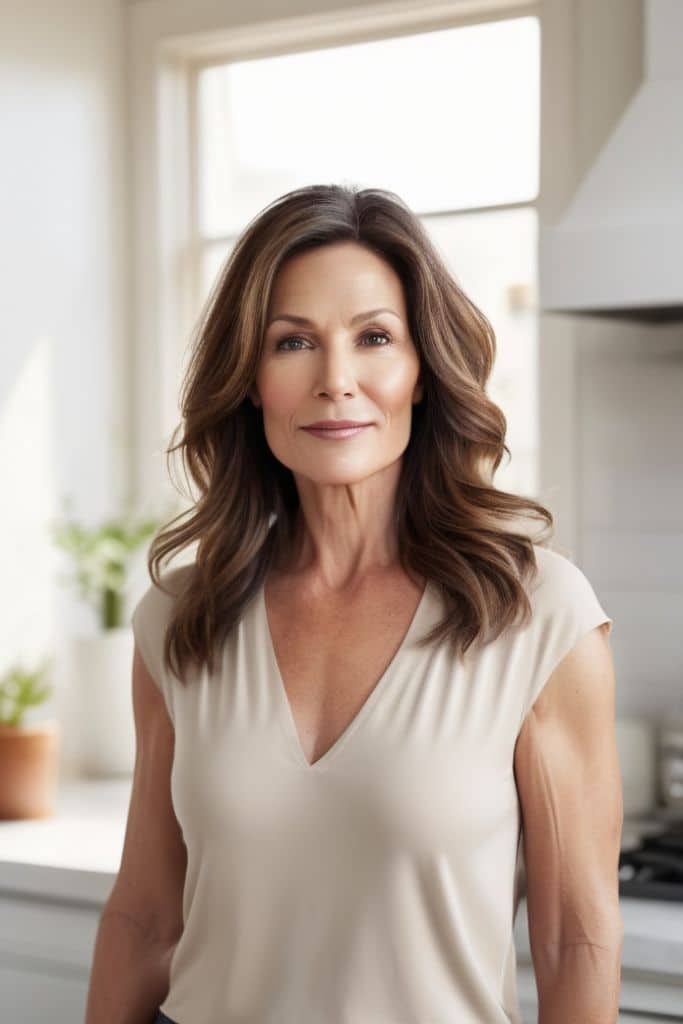
Strategic highlighting around the face brightens your complexion and adds dimension to long hair without requiring all-over color. These highlights can be customized to complement your skin tone warmer shades for cool skin tones and cooler shades for warm skin tones.
This technique works for all hair colors and types, though the effect is most dramatic on darker base shades. The highlighted pieces should align with your natural parting and the way your hair typically falls around your face for the most flattering effect.
Style by directing the highlighted pieces away from the face with a round brush or curling iron to showcase the color. This technique grows out naturally without an obvious line of demarcation, making it ideal for those who prefer lower-maintenance color options.
23. V-Cut with Long Layers

The V-cut creates a distinct point at the back of the hair, with the center length extending longer than the sides. When combined with long layers, it creates a dynamic shape that moves beautifully and prevents the heavy, curtain-like effect of one-length cuts.
This style works particularly well for thick, straight, or wavy hair types. The V-shape removes bulk from the sides while maintaining dramatic length in the back. This cut is especially flattering when hair is worn down and flowing.
Style with loose waves to enhance the dimensional effect of the V-shape. When curled, the shorter sides and longer back create a cascading effect that’s both romantic and dramatic. This cut requires minimal maintenance beyond regular trims every 10-12 weeks to maintain the V-shape.
24. Long Disconnected Layers
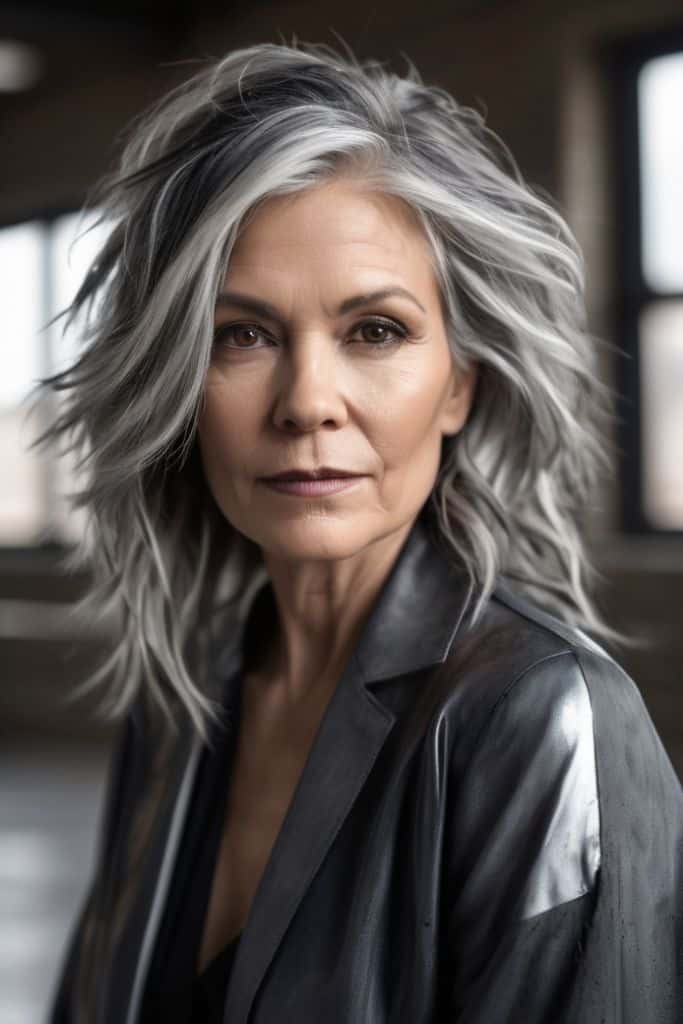
Disconnected layers create deliberate separation between different sections of hair rather than blending them seamlessly. In long hair, this creates dynamic movement and texture while maintaining an overall lengthy silhouette.
This edgy style works well for those with thicker hair that can handle significant layering without losing fullness. The disconnection is particularly effective for those with natural texture, as it enhances wave patterns and reduces weight that might otherwise pull out natural curl.
Style with a texturizing spray or sea salt spray to enhance the separation between layers. This cut looks particularly striking when worn with tousled, undone waves that showcase the intentional disconnection. It’s relatively low-maintenance, as the deliberately undone nature of the cut means it doesn’t need to look perfectly polished.
25. Blunt Ends with Internal Layers
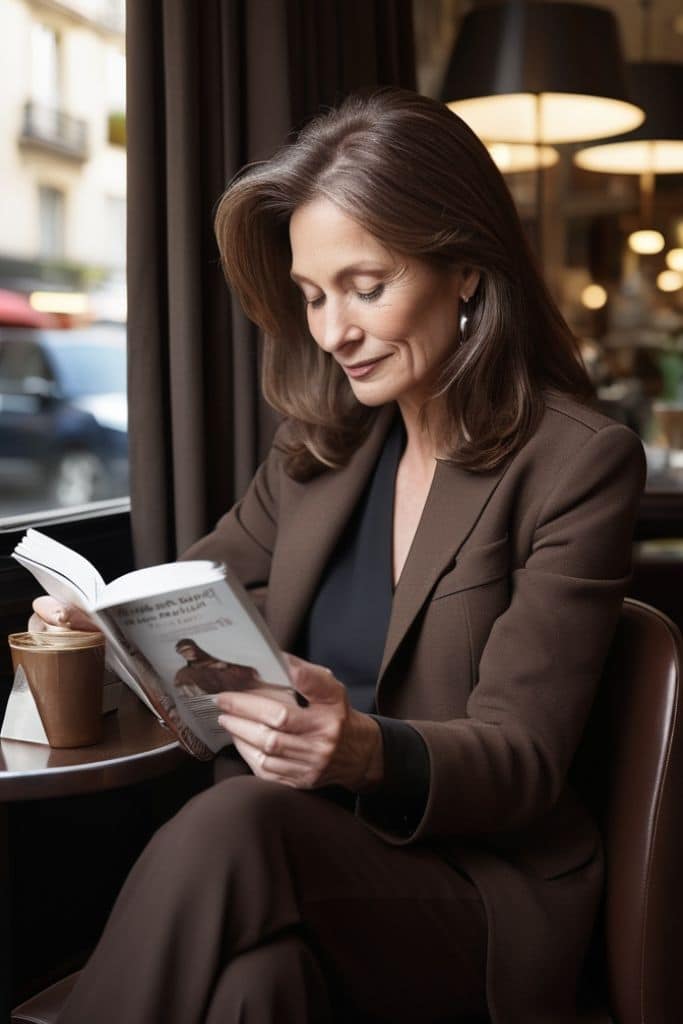
This sophisticated style combines the clean line of a blunt perimeter with invisible layers cut only into the interior of the hair. The result maintains the strength and impact of a one-length cut while removing bulk and adding movement within.
This technique works beautifully for those with fine to medium hair who want to maintain the appearance of thickness at the ends while still having some movement and volume throughout. The blunt perimeter creates the illusion of thickness while the internal layers prevent the hair from falling flat.
Style with a round brush for volume at the roots while maintaining the sleek line at the ends. This cut requires regular trims every 6-8 weeks to maintain the precise blunt line. A shine serum applied mid-length to ends enhances the polished effect of this sophisticated style.
26. Butterfly Layers

Butterfly layers are the hair world’s best-kept secret. Named for their wing-like appearance when the hair is fanned out, these layers start higher at the crown and cascade down in a specific pattern that creates incredible movement.
Unlike traditional layers that focus on the ends, butterfly layers distribute volume throughout the mid-lengths, creating that coveted fullness at the crown while maintaining gorgeous length. They’re particularly magic for fine hair that tends to fall flat, as they create the illusion of thickness without sacrificing those precious inches you’ve grown.
To style, a round brush blow-dry concentrating on lifting at the roots will showcase the dimensions perfectly. For extra oomph, try flipping your head upside down during drying to enhance the volume these special layers create. Ask your stylist specifically for “butterfly layers” not all hairdressers are familiar with this technique, so bringing a reference pic is super helpful.
27. Reverse Layers
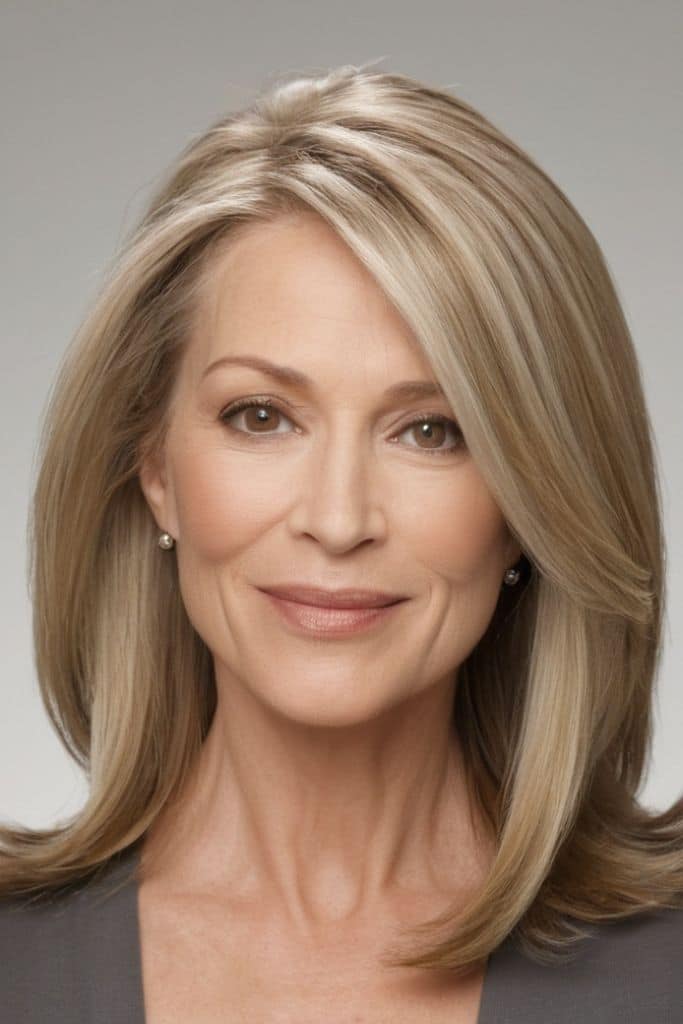
Flip the script on traditional layering with reverse layers a technique where the underneath sections are actually shorter than the top layers. This counter-intuitive approach creates amazing fullness and body, especially for those with finer hair textures.
The magic happens becuz the shorter bottom layers push up the longer top sections, creating natural lift without requiring tons of product or teasing. The effect is most dramatic when there’s a significant difference between the shortest bottom layers and the longest top sections.
Style with a round brush, focusing on turning ends under slightly to enhance the volumizing effect. This cut is relatively low-maintenance and grows out beautifully, with trimming needed only every 3-4 months to maintain the structured layering pattern. Just be sure to find a stylist who understands this specific technique it’s not as common as traditional layering.
28. Long Undercut
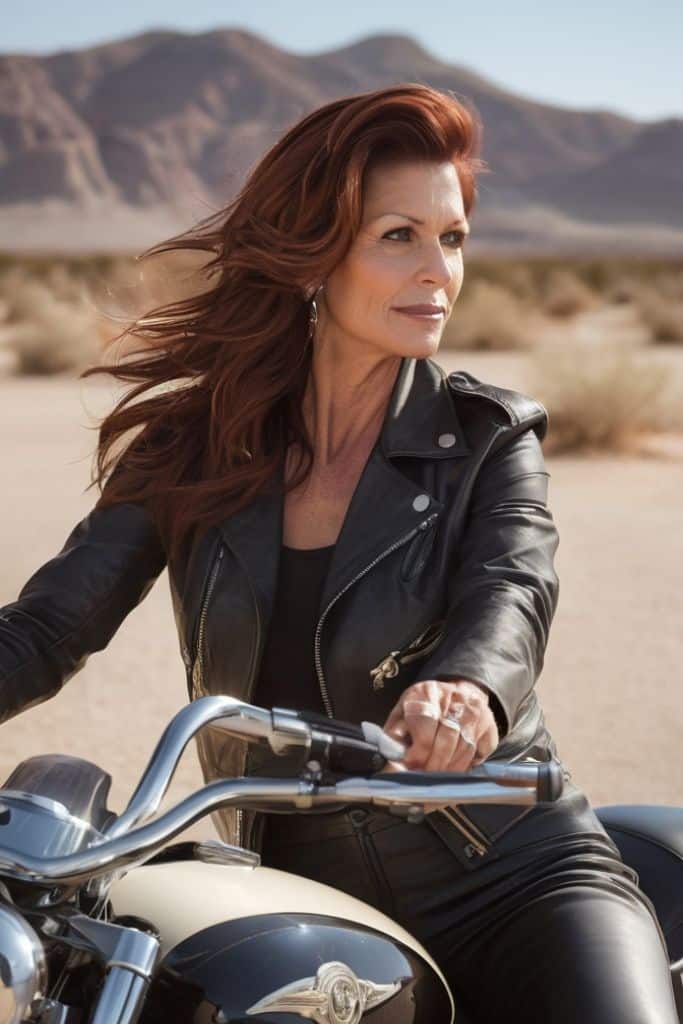
The long undercut offers the perfect balance of edgy and feminine. This style involves shaving or significantly shortening the hair underneath (typically at the nape or sides) while maintaining long, flowing locks on top. When worn down, the undercut remains your little secret; when styled up, it reveals an unexpected edge.
This versatile style works amazingly for those with very thick hair who need substantial weight removal without losing overall length. The undercut portion can be as creative as you like from simple clipper cuts to intricate designs, patterns, or even color that’s revealed only when you choose.
Maintenance depends on how short you go with the undercut area shorter designs might need refreshing every 3-4 weeks, while slightly longer undercuts can stretch to 6-8 weeks between touch-ups. The top length follows normal long hair maintenance schedules, with occasional dustings to prevent split ends.
29. Concave Layers

Concave layers create a subtle U-shape throughout the hair rather than straight-across lines. This technique adds incredible dimension and movement while following the natural fall pattern of long hair for an effortlessly flattering effect.
The concave shape frames the face beautifully and prevents the “pyramid” effect that can happen with straight layers on some hair types. This style works particulary well for those with natural wave or curl patterns, as the curved layers enhance natural texture rather than fighting against it.
For styling, a diffuser attachment on your blow dryer will enhance the natural movement these layers create. Alternatively, twist sections while air-drying for defined, bouncy texture without heat damage. This low-maintenance cut grows out gradually and harmoniously, requiring trimming only every 3-4 months.
30. Long Hair with Hidden Rainbow Panels
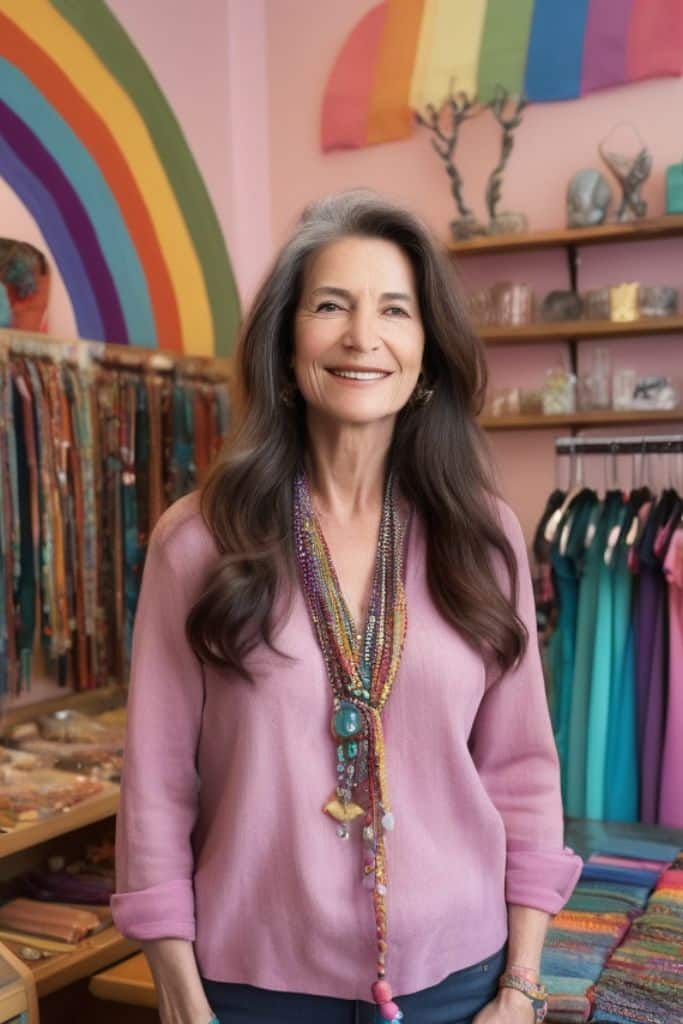
For the bold at heart who still need to maintain professional appearances, hidden rainbow panels offer the perfect compromise. This technique involves vivid colors applied to underneath sections of hair that peek through only with movement or when styled in certain ways.
The placement is key typically colored panels start below the ear level and can be as narrow or wide as desired. When worn down and straight, the colors remain mostly concealed; when curled, braided, or worn in half-up styles, the vibrant hues make surprise appearances.
Maintenance requires commitment, as vivid colors need regular refreshing to maintain their intensity. Using color-safe products and cold water washing significantly extends the life of your rainbow. The growing-out phase is relatively forgiving since the colored sections aren’t immediately visible in everyday styling.
31. Faux Side-Shave with Long Length
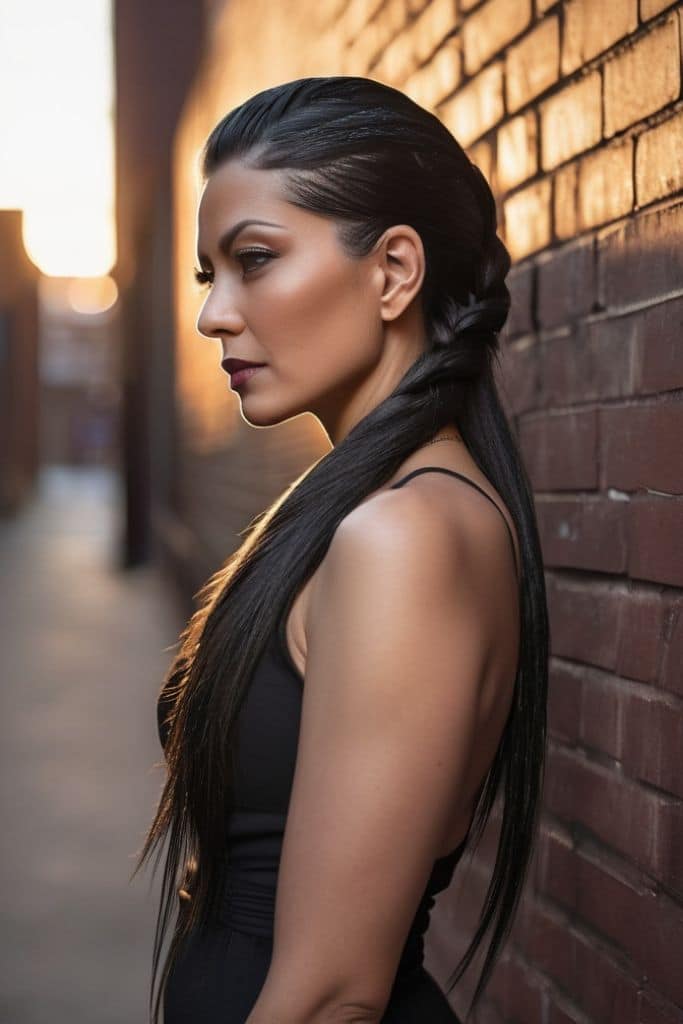
The faux side-shave gives you the edgy aesthetic of an undercut without committing to the actual razor. This style involves dramatically shorter layers on one side of the head (typically above the ear and extending slightly back) while maintaining long, flowing length everywhere else.
When worn down with a deep side part, the contrast creates the illusion of a side-shave; when parted differently, the look transforms completely. This versatility makes it perfect for those who want to experiment with edgier styles without sacrificing their length or committing to actual shaving.
Styling options are incredibly diverse wear it sleek to emphasize the dramatic length difference, or add waves for a softer interpretation of the edge. This cut typically requires maintenance every 8-10 weeks to preserve the precise proportion between the short and long sections.
32. Inverted Mermaid Cut

The inverted mermaid cut flips traditional mermaid hair on its head. Instead of the classic shortest-to-longest progression, this style features slightly shorter pieces at the very bottom that create a subtle “fishtail” effect hence the mermaid reference.
This unexpected twist on long layers creates beautiful movement at the ends without the sometimes-harsh appearance of traditional layers. The subtle inversion adds bounce and playfulness to the ends while maintaining the overall length and fullness throughout the mid-sections.
Style with a large-barrel curling iron, alternating directions of curls for a tousled effect that showcases the unique ending shape. This cut grows out almost imperceptibly, requiring minimal maintenance beyond regular end-trimming every 3 months or so to maintain the inverted shape.
33. Long Mohawk Blend
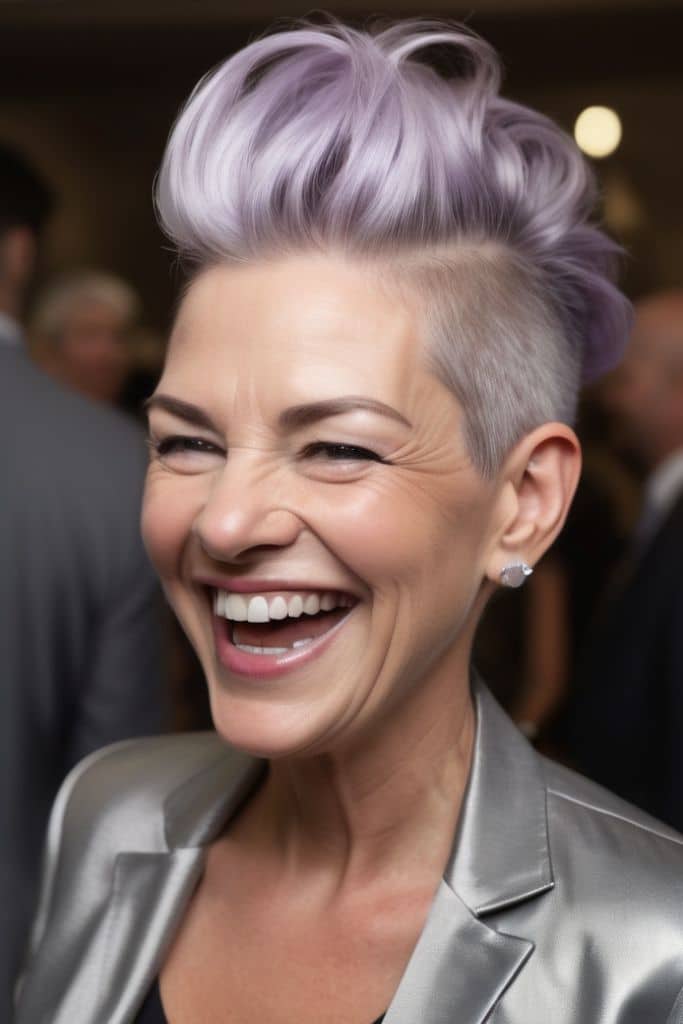
The long mohawk blend offers an unexpectedly wearable take on the punk classic. This style features noticeably shorter layers through the center of the head from forehead to nape that gradually blend into longer lengths on the sides.
When styled flat, it appears as a conventional layered cut; when styled with volume at the crown, the mohawk inspiration becomes apparent. This versatility makes it perfect for those who want to experiment with dramatic styles without committing to an actual mohawk.
For maximum impact, blow-dry using a round brush focused on creating height through the center sections, finishing with texturizing paste to create piece-y definition. Alternatively, braiding just the center section creates a stunning faux-hawk effect for special occasions without any cutting at all.
34. Chandelier Layers
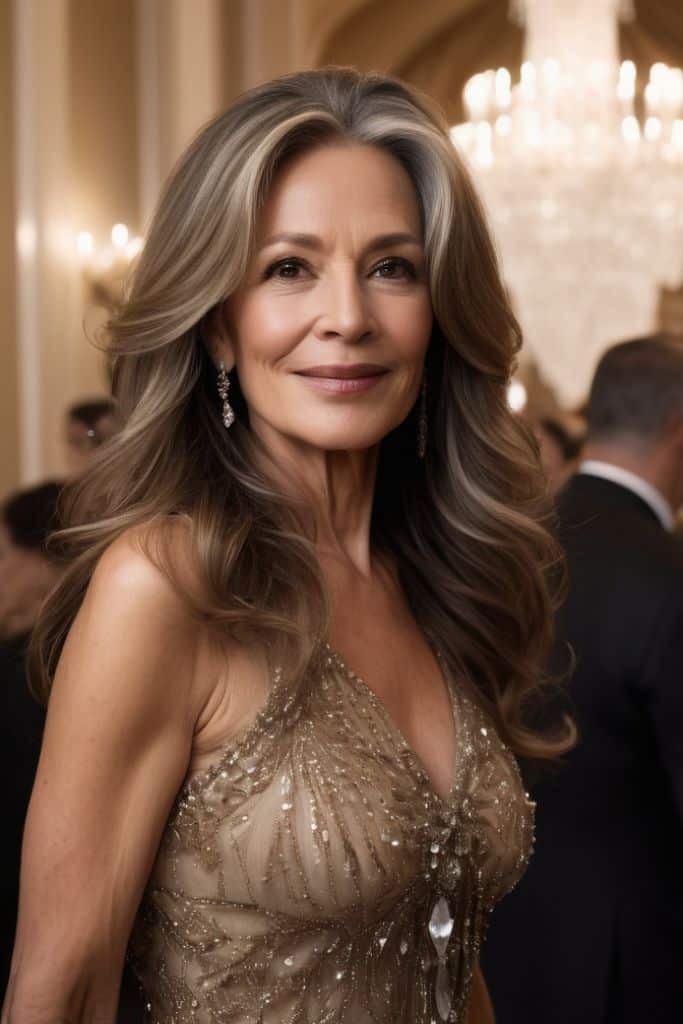
Chandelier layers derive their name from their cascading, graduated appearance that resembles the hanging crystals of an elegant chandelier. This precise cutting technique creates feather-light ends that move beautifully with minimal styling.
Unlike traditional layers that might be cut at consistent intervals, chandelier layers are meticulously point-cut at varying lengths to create a soft, seamless graduation. The result is ends that seem to float and shimmer with movement, adding ethereal lightness to even the thickest hair.
This style requires a skilled stylist comfortable with precision cutting techniques. For styling, a simple blow-dry with fingers rather than a brush often suffices, as over-styling can diminish the delicate nature of the layers. A lightweight texturizing spray enhances the dimensional quality without weighing down the carefully crafted ends.
35. Long Hair with Peek-a-Boo Color Blocks
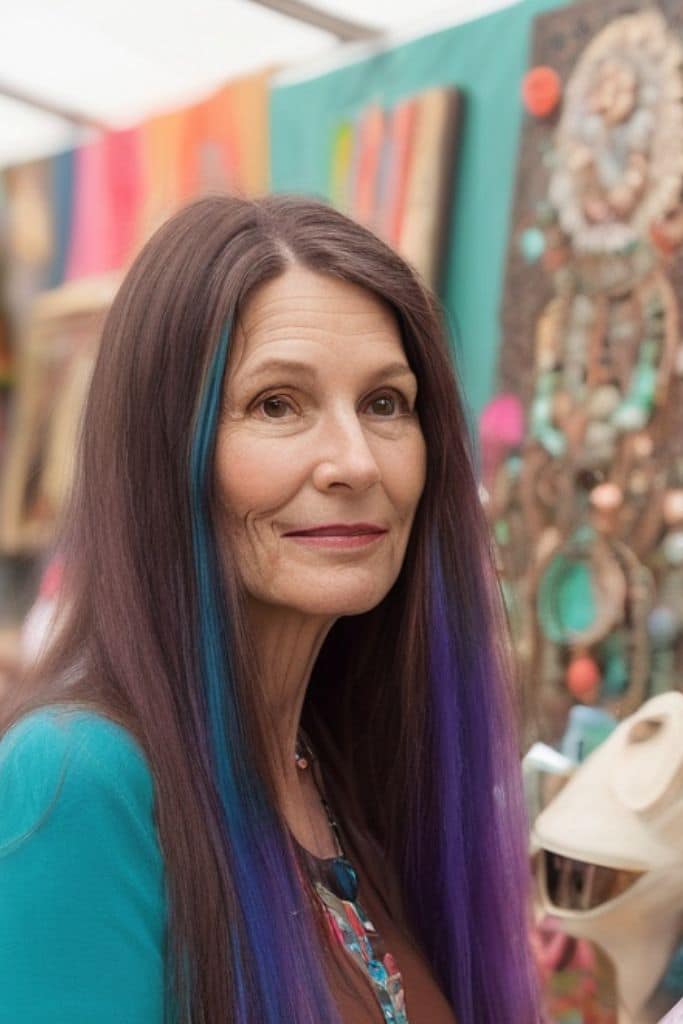
Peek-a-boo color blocks offer a sophisticated twist on vivid hair coloring. Rather than all-over bright hues, this technique places concentrated blocks of color on the underneath layers, typically starting several inches from the roots and extending to the ends.
The placement creates a “now-you-see-it-now-you-don’t” effect when hair is worn down and straight, glimpses of color show through subtly; when styled in braids, updos, or ponytails, the vibrant sections become more prominently displayed.
This approach works beautifully for professionals who want to experiment with bold colors without compromising workplace appropriateness. Maintenance is relatively forgiving since the colored sections aren’t immediately visible in most styling scenarios, allowing for longer stretches between color refreshing appointments.
36. Bi-Level Cut
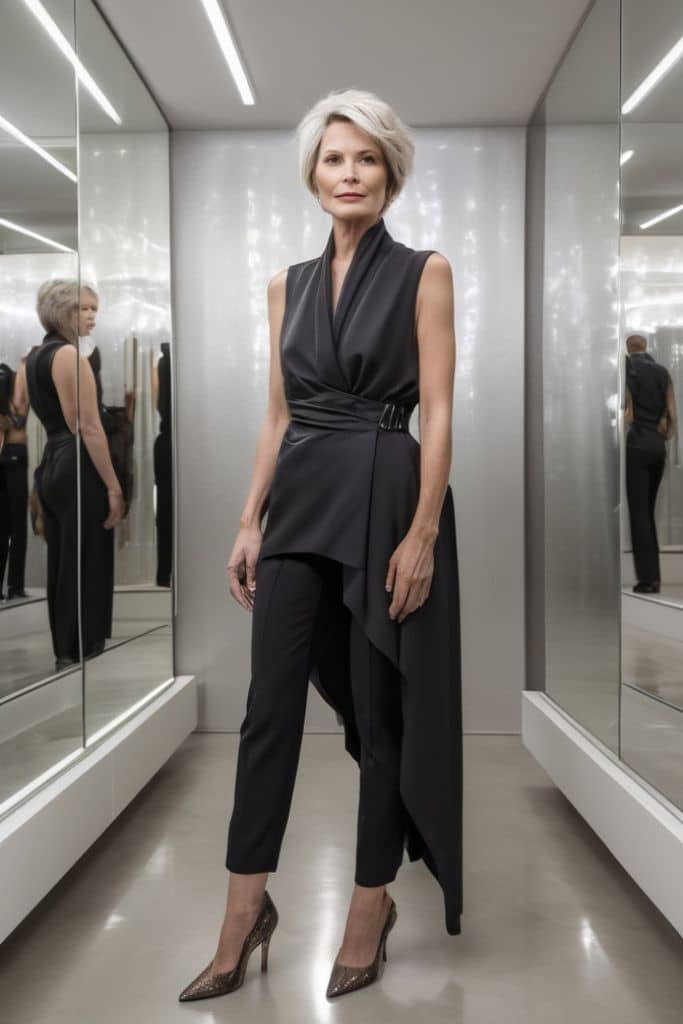
The bi-level cut creates a striking silhouette by establishing two distinct length lines rather than gradual layering. Typically, the upper half of the hair (from the occipital bone up) is cut to one length, while the lower half remains significantly longer, creating a dramatic yet wearable two-tier effect.
This architectural approach works particularly well for those with straight or slightly wavy hair that can showcase the precise lines of the cut. The contrast between the two lengths adds movement and dimension without sacrificing the overall long appearance.
Styling can emphasize or soften the distinction between levels. Straightening highlights the graphic nature of the cut, while curling creates a more blended effect between the two lengths. Regular trims every 8-10 weeks maintain the deliberate distinction between levels.
37. Waterfall Twist Layers
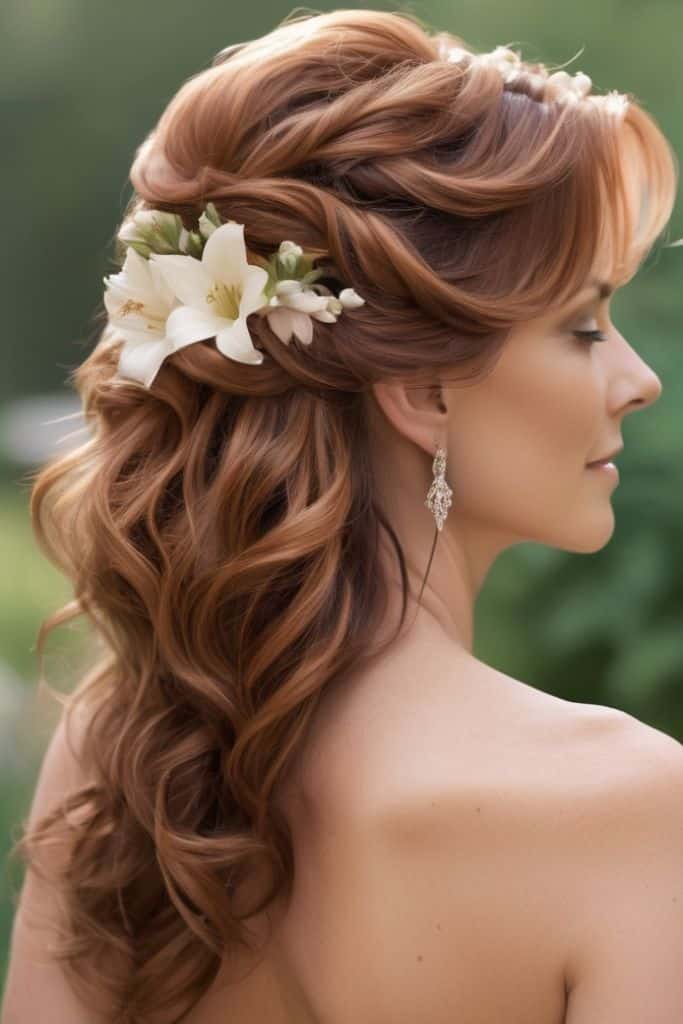
Waterfall twist layers combine creative cutting and styling techniques to create the impression of hair cascading like a natural waterfall. This style involves strategically placed short-to-long layers combined with a twisting cutting technique that creates incredible movement.
Unlike conventional layers cut straight across, waterfall layers are cut by twisting sections of hair before cutting, creating varied lengths within each section. This approach works beautifully for those with natural texture, as it encourages wave patterns while removing bulk in a natural-looking way.
For styling, scrunch with curling cream while damp and either air-dry or diffuse for enhanced texture. This low-maintenance cut grows out seamlessly and actually looks better with some lived-in time between salon visits, needing refreshing only every 4-5 months.
38. Long Choppy Pixie-Inspired Layers
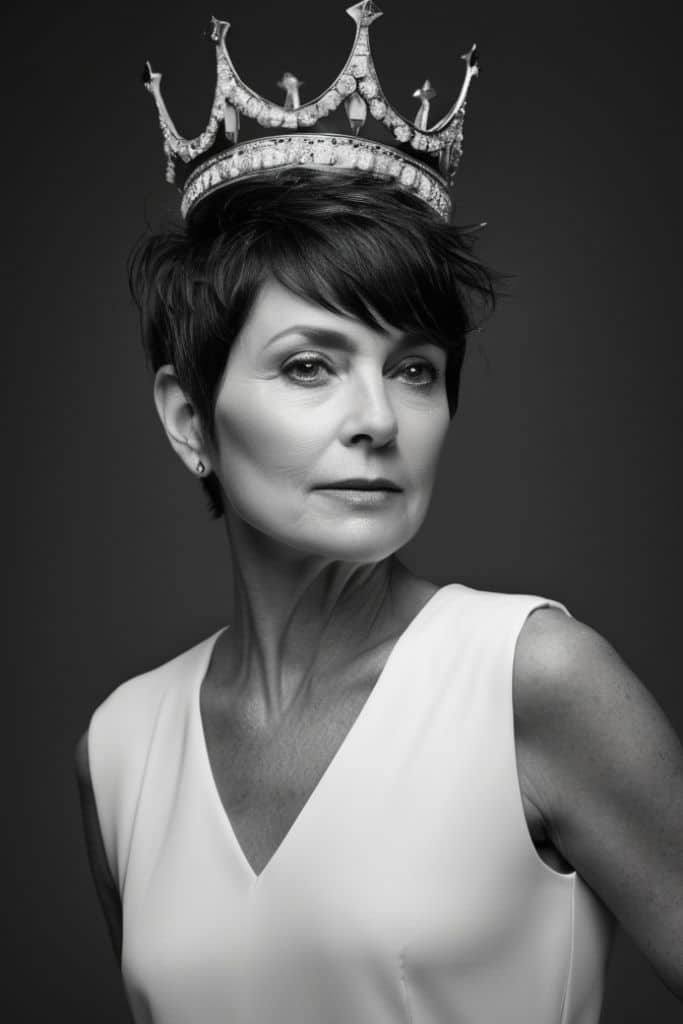
This unexpected combo pairs pixie-inspired choppy texturing around the crown and face with long, flowing length through the back and sides. The result is a rocker-chic aesthetic that offers the best of both worlds—the edgy texture of a pixie with the versatility of long hair.
The shortest pieces typically hit around eyebrow or cheekbone level, creating face-framing pieces that add character and edge. These blend gradually (or sometimes more dramatically) into the longer sections that maintain an overall lengthy silhouette.
Style with texturizing paste or pomade to piece out the shorter sections while keeping the lengths sleek or tousled, depending on your preference. This cut requires moderate maintenance, with trims every 6-8 weeks to maintain the precise textured pieces around the face.
39. Staggered Endpoints
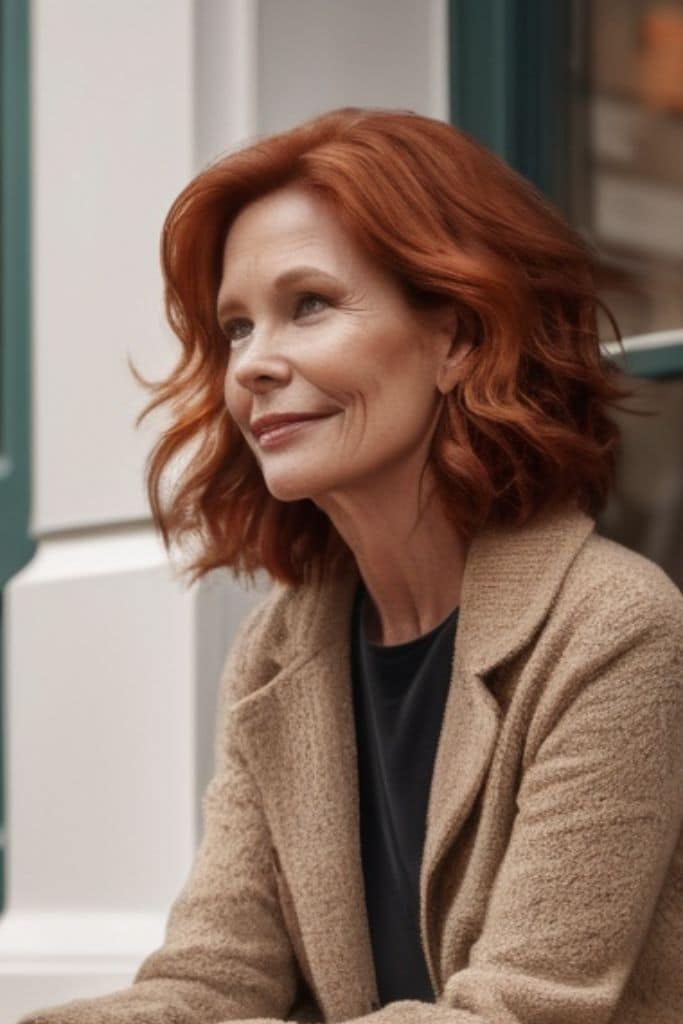
Staggered endpoints create a deliberately uneven perimeter that adds texture and movement to the ends of long hair. Unlike a blunt cut or even conventional layers, this technique involves cutting random sections to slightly different lengths for an imperfectly perfect finish.
This technique works beautifully for those with natural wave or curl patterns, as the varied endpoints enhance natural texture rather than fighting against it. The staggered approach is particularly flattering for those with finer hair, as it creates the illusion of fullness and texture at the ends.
Style with a texture spray and scrunch the ends to emphasize the deliberate unevenness. This low-maintenance cut requires minimal upkeep beyond occasional dustings to prevent split ends, with the intentionally undone appearance actually improving as it grows.
40. Long Razor-Cut Shag
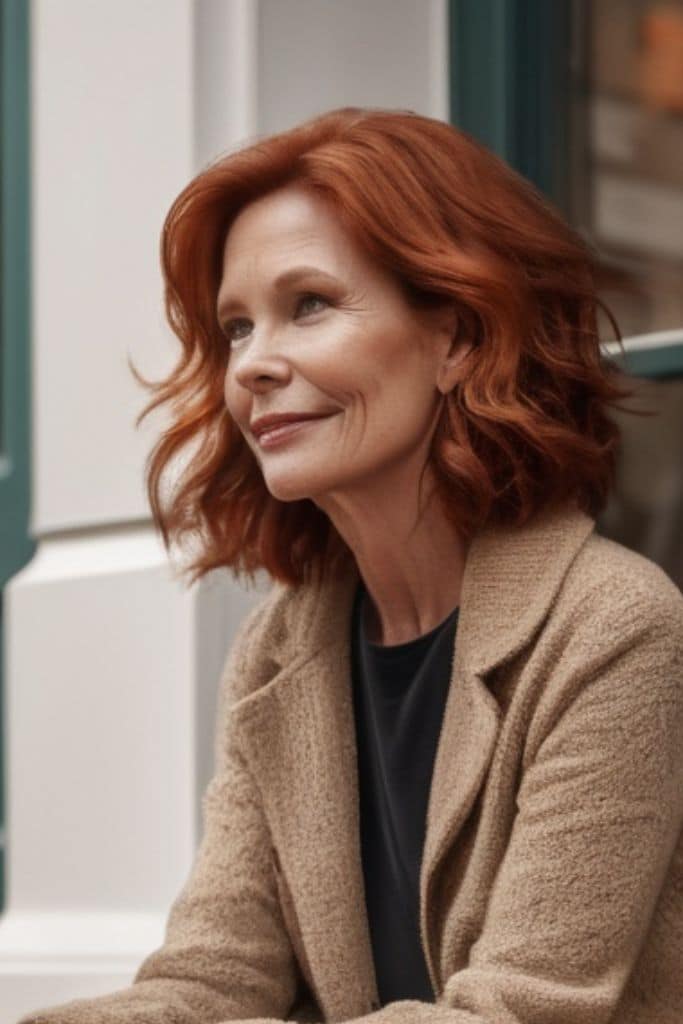
The razor-cut shag combines the texture and layers of a classic shag with the length and versatility of long hair. Using a razor rather than scissors creates wispy, feathered layers that move beautifully while removing bulk and adding dimension.
The razor technique creates softer transitions between layers than scissors can achieve, resulting in a lived-in, effortless appearance from day one. Face-framing layers typically start around the cheekbones, with varied lengths throughout that maintain an overall long silhouette.
This style works exceptionally well for straight to wavy hair types of medium to thick density. For styling, a texturizing spray scrunched into dry hair enhances the piece-y, rock-and-roll quality that makes this cut so distinctive. Avoid over-styling—the beauty of the razor cut is in its natural, undone finish.
41. Curly Layers with Rounded Shape

For naturally curly hair, specially designed rounded layers create a beautiful shape that works with—not against—your curl pattern. This technique involves cutting the hair dry and shaped into a soft rounded silhouette that prevents the dreaded triangle effect.
Unlike one-length cuts that can become bottom-heavy with curls, or traditional layers that might create awkward poofiness, rounded curly layers distribute volume evenly from crown to ends. The approach works for all curl types from loose waves to tight coils.
Styling focuses on curl definition rather than fighting the natural pattern. Using curl-specific products and either air-drying or diffusing preserves the carefully crafted shape. This specialist cut requires a curly hair expert but needs refreshing only every 4-6 months as it grows out harmoniously.
42. Long Textured Bob to Waist-Length Blend
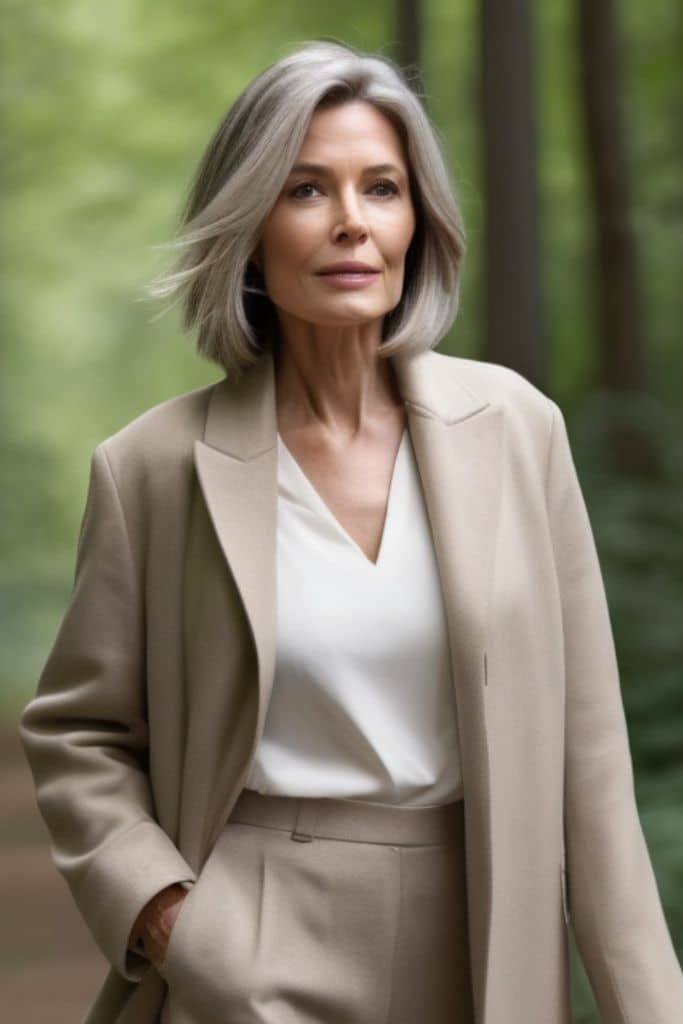
This dramatic style creates an illusion of a textured bob from the front while maintaining incredible length at the back essentially offering two hairstyles in one. The front sections are cut to approximately chin or collarbone length, while the back remains long, often reaching the waist.
This architectural approach works particularly well for those with straighter hair types that can showcase the precise lines of the cut. The contrast between the structured front and flowing back creates a striking silhouette that’s both edgy and feminine.
Styling options are diverse wear it sleek to emphasize the dramatic length difference, or add texture throughout for a more cohesive blend between the short and long sections. This cut requires maintenance every 8-10 weeks to preserve the precise proportion between the front and back sections.
43. Long Airy Layers
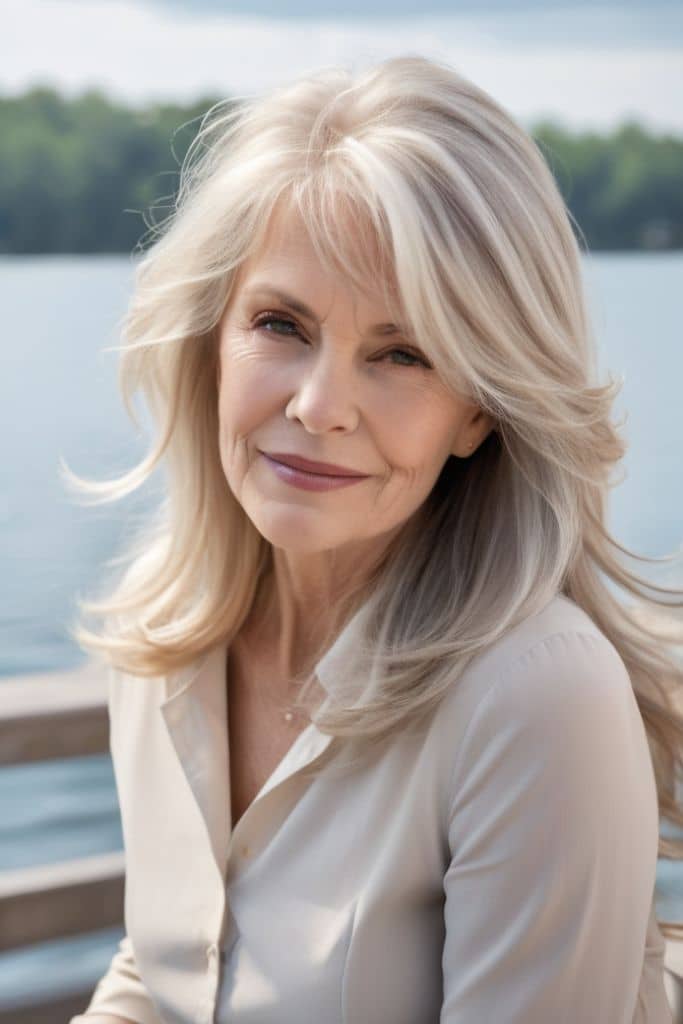
Airy layers use a specialized cutting technique to remove bulk without creating obvious layer lines, resulting in hair that moves as if gravity barely affects it. The approach involves point-cutting into the interior of the hair rather than creating shelf-like layers.
This technique works magic for thick, heavy hair that tends to hang flat despite its density. The internal weight removal allows the hair to achieve natural movement and bounce while maintaining a relatively even perimeter length.
For styling, a blow-dry with a paddle brush rather than a round brush enhances the light, airy quality of these special layers. A volume spray at the roots combined with a lightweight serum through the ends completes the weightless effect this cut is designed to create.
44. Deep-Point Cut Ends
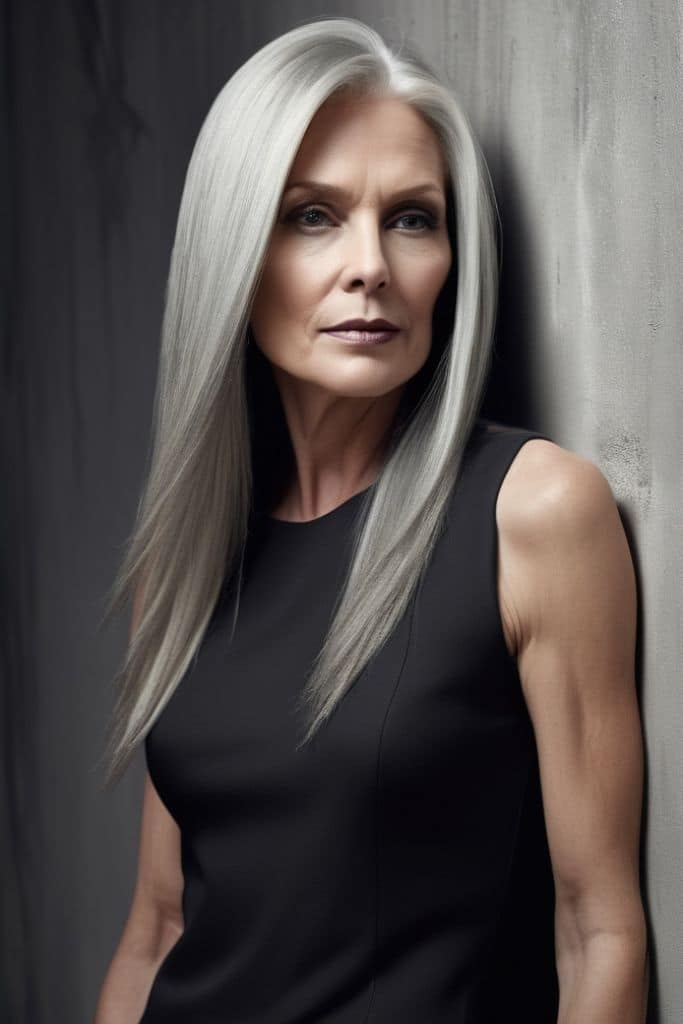
Deep-point cutting creates soft, diffused ends rather than the blunt lines of conventional cutting. This technique involves holding the scissors vertically and cutting up into the ends of the hair, creating piece-y, textured tips that move beautifully.
This approach works wonderfully for those who find their hair looks too heavy or solid at the ends. The deep-point technique softens the perimeter without removing overall length, creating movement and lightness without obvious layering.
Style with beach waves to enhance the piece-y quality of the ends, or wear straight for a more subtle textured effect. This low-maintenance technique actually looks better as it grows out, requiring refreshing only every 3-4 months to maintain the softness at the ends.
45. Asymmetrical Face Frame
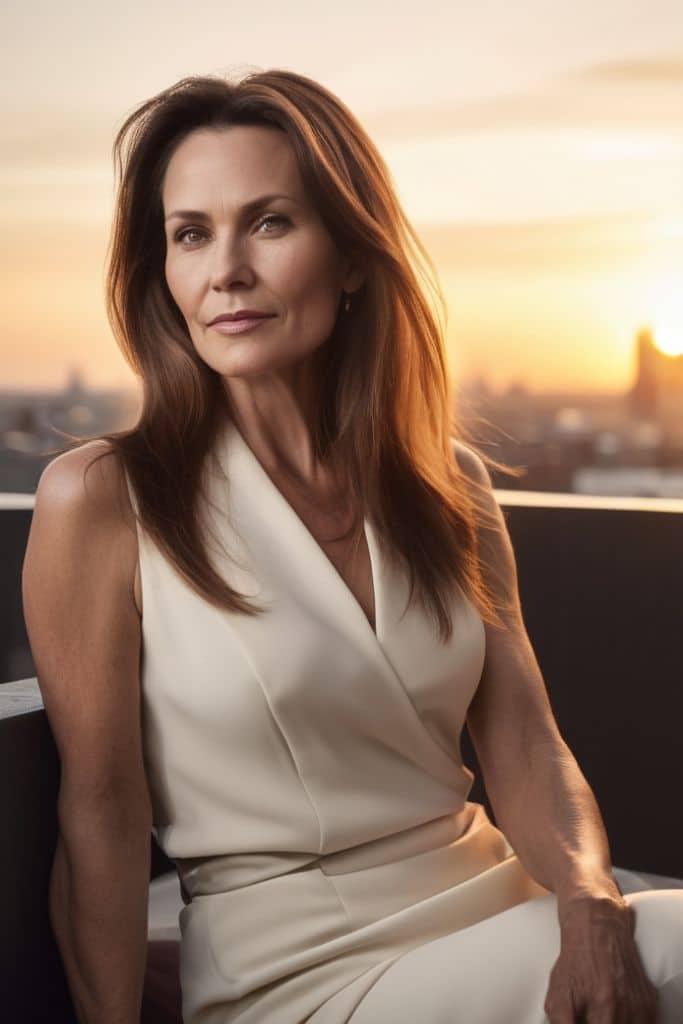
The asymmetrical face frame creates deliberate unevenness around the face—typically with shorter layers on one side and longer, more subtle layers on the other. This creates a dynamic frame that draws attention to your features in an unusual, eye-catching way.
This style works particularly well for those who typically wear their hair parted to one side, as it enhances the natural fall of the hair. The more dramatically layered side adds interest and movement, while the subtler side maintains length and versatility.
To style, blow-dry with a round brush, directing the shorter side away from the face to showcase the deliberate asymmetry. This cut requires moderate maintenance, with trims every 8-10 weeks to preserve the intentional difference between sides rather than allowing them to grow out evenly.
46. Twisted-Cut Layers
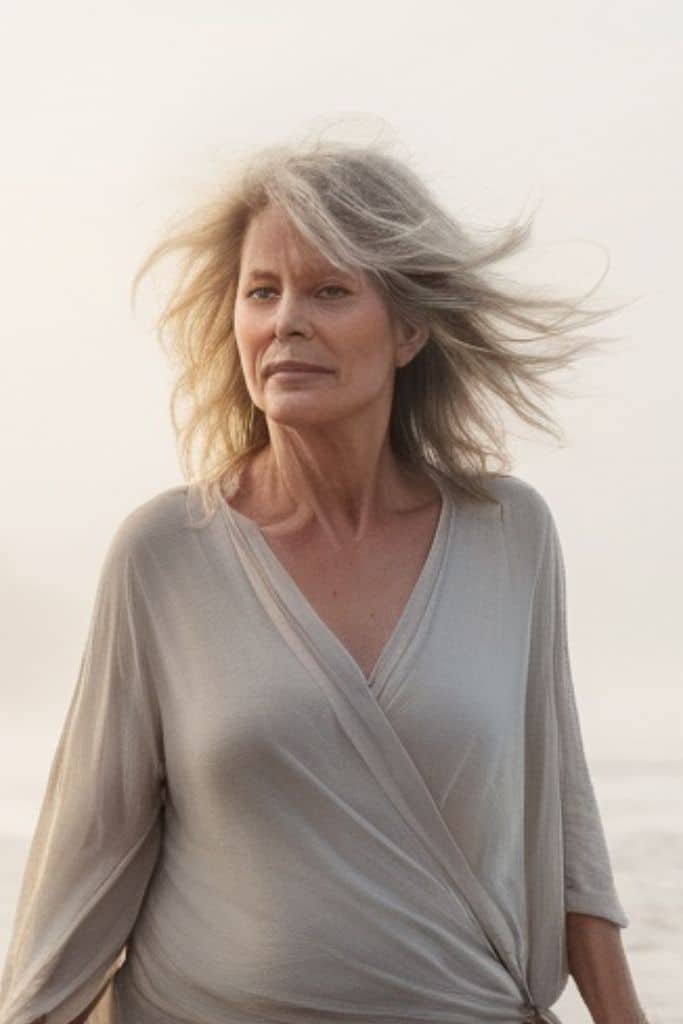
The twisted-cut technique involves literally twisting sections of hair before cutting, creating varied lengths within each section that produce incredible natural-looking texture and movement. The result is layers that seem to blend seamlessly without obvious steps.
This approach works beautifully for wavy and curly hair types, as it follows and enhances natural texture patterns. The twisted technique removes bulk while maintaining length, creating lightness and bounce without sacrificing inches.
Styling is refreshingly simple scrunch with curl cream and either air-dry or diffuse for enhanced texture. A major benefit of this cutting technique is that it grows out exceptionally well, with the varied lengths continuing to create dimension even months after your salon visit.
47. Long Hair with Micro-Layers
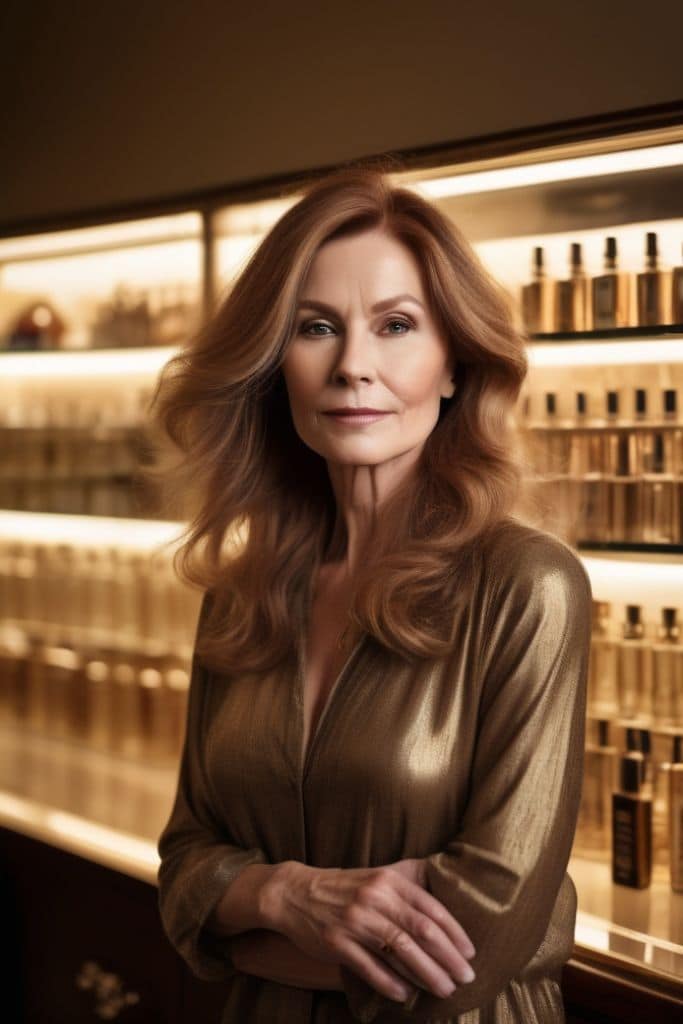
Micro-layers involve creating extremely subtle, barely-there layers throughout long hair. Unlike conventional layering, these whisper-light layers remove minimal length often just half an inch to an inch creating movement without obvious layer lines.
This technique works wonderfully for those who want the benefits of layers (movement, decreased drying time, reduced weight) without dramatically altering their overall one-length appearance. It’s particularly effective for fine hair that can be overwhelmed by chunky layers.
Style with a large paddle brush during blow-drying for a smooth finish that still moves naturally. The beauty of micro-layers is their versatility they enhance curl patterns when worn natural and create subtle bounce when straightened. This low-maintenance approach needs refreshing only every 4-5 months.
48. Spiral-Cut Layers
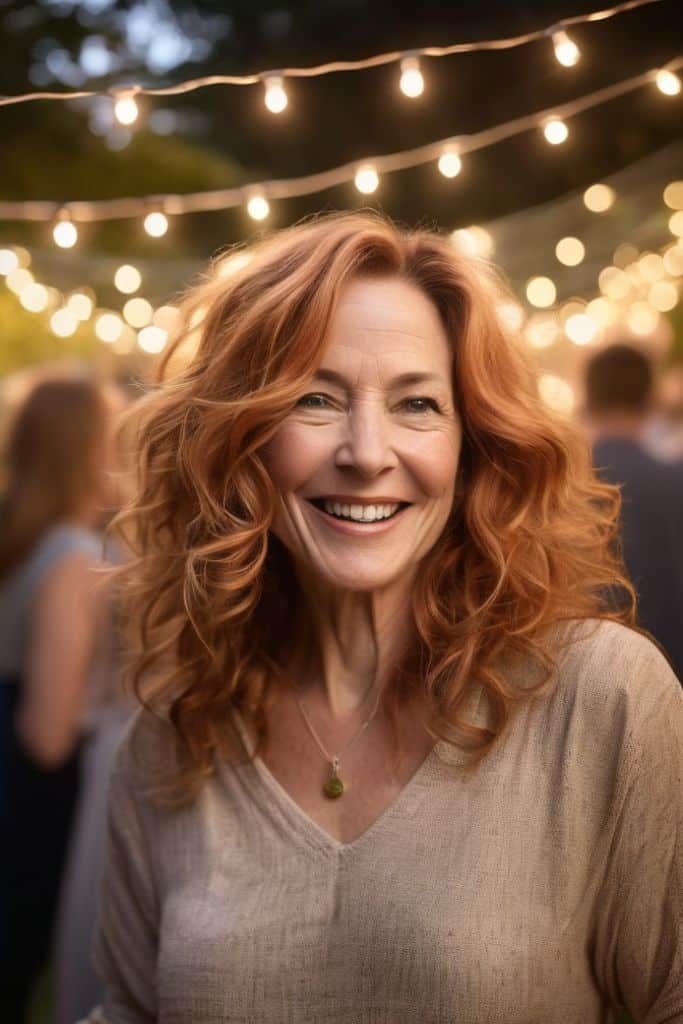
Spiral cutting involves sectioning the hair in a spiral pattern around the head before cutting, creating uniquely distributed layers that enhance natural wave patterns and create beautiful movement. The technique works with the hair’s natural growth and fall patterns rather than imposing arbitrary layer placement.
This innovative approach works wonders for wavy, curly, and especially spiral curl patterns, as it follows the hair’s natural tendencies. The result is enhanced curl definition, improved shape, and reduced bulk without losing the overall long appearance.
For styling, apply curl-enhancing products to soaking wet hair and either air-dry or diffuse without disturbing the curl pattern. This specialized cut requires a stylist familiar with spiral-cutting techniques but needs refreshing only every 4-6 months as it grows out harmoniously with your natural texture.
49. Diagonal-Forward Long Cut
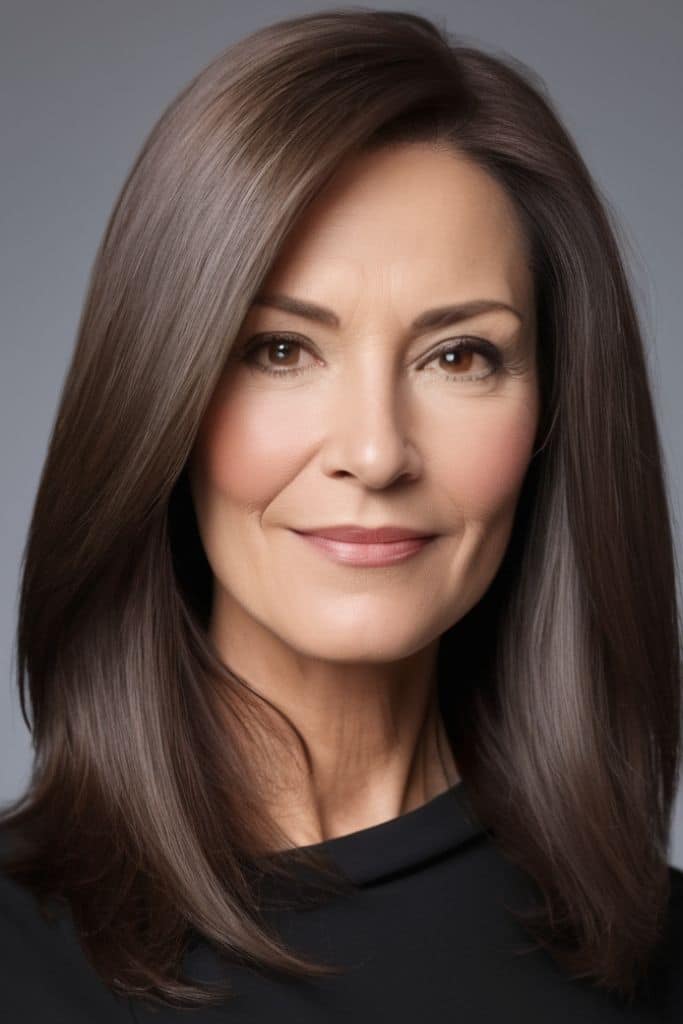
The diagonal-forward cut creates a subtle angle that’s longer in the front than the back—not dramatically enough to be considered an A-line bob, but with enough angle to create beautiful forward movement around the face. This technique frames the face while maintaining gorgeous length throughout.
This architectural approach works particularly well for straight or slightly wavy hair that can showcase the precise lines of the cut. The subtle forward angle directs attention to the face while the long length maintains versatility for various styling options.
For maximum impact, straighten with a flat iron to emphasize the deliberate angle. Alternatively, create soft waves starting below the chin to add texture while maintaining the visibility of the diagonal line. This cut requires maintenance every 10-12 weeks to preserve the intentional angle.
50. Long Hair with Shadow Layers

Shadow layers create dimension through subtlety—they’re cut to be virtually invisible when hair is worn straight but reveal themselves beautifully when the hair is curled or waved. This technique involves ultra-thin sections cut at varied intervals to create movement without obvious layering.
This approach works wonderfully for those who alternate between straight and curly styles frequently, as it looks intentional and beautiful either way. Shadow layers remove just enough weight to allow movement and prevent the “curtain effect” without creating distinct layer lines.
Conclusion
Long hair offers endless styling possibilities, and finding the right cut can transform your relationship with your tresses. Whether you’re drawn to edgy disconnected layers or classic face-framing pieces, the perfect long hairstyle should enhance your natural texture while complementing your face shape and lifestyle.
Remember that maintenance is key to keeping long hair looking its best. Regular trims (even just dusting the ends) prevents splitting and breakage that can travel up the hair shaft. Investing in quality heat protectants and moisturizing treatments will keep your lengthy locks healthy enough to style in all these gorgeous ways.
